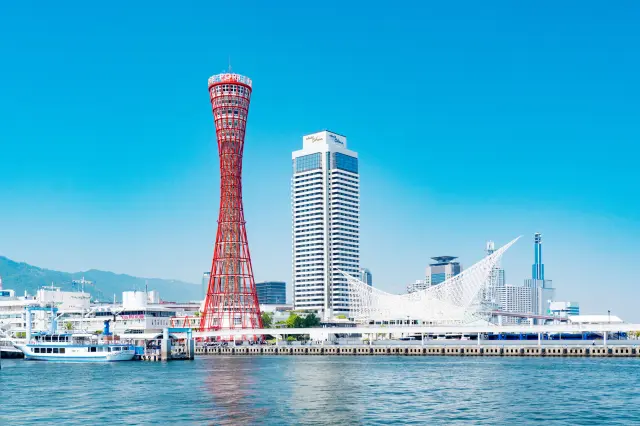 Search for Flights
Search for Flights
 Search for Hotels
Search for Hotels
 Check Exchange Rates
Check Exchange Rates
 Check the Weather
Check the Weather
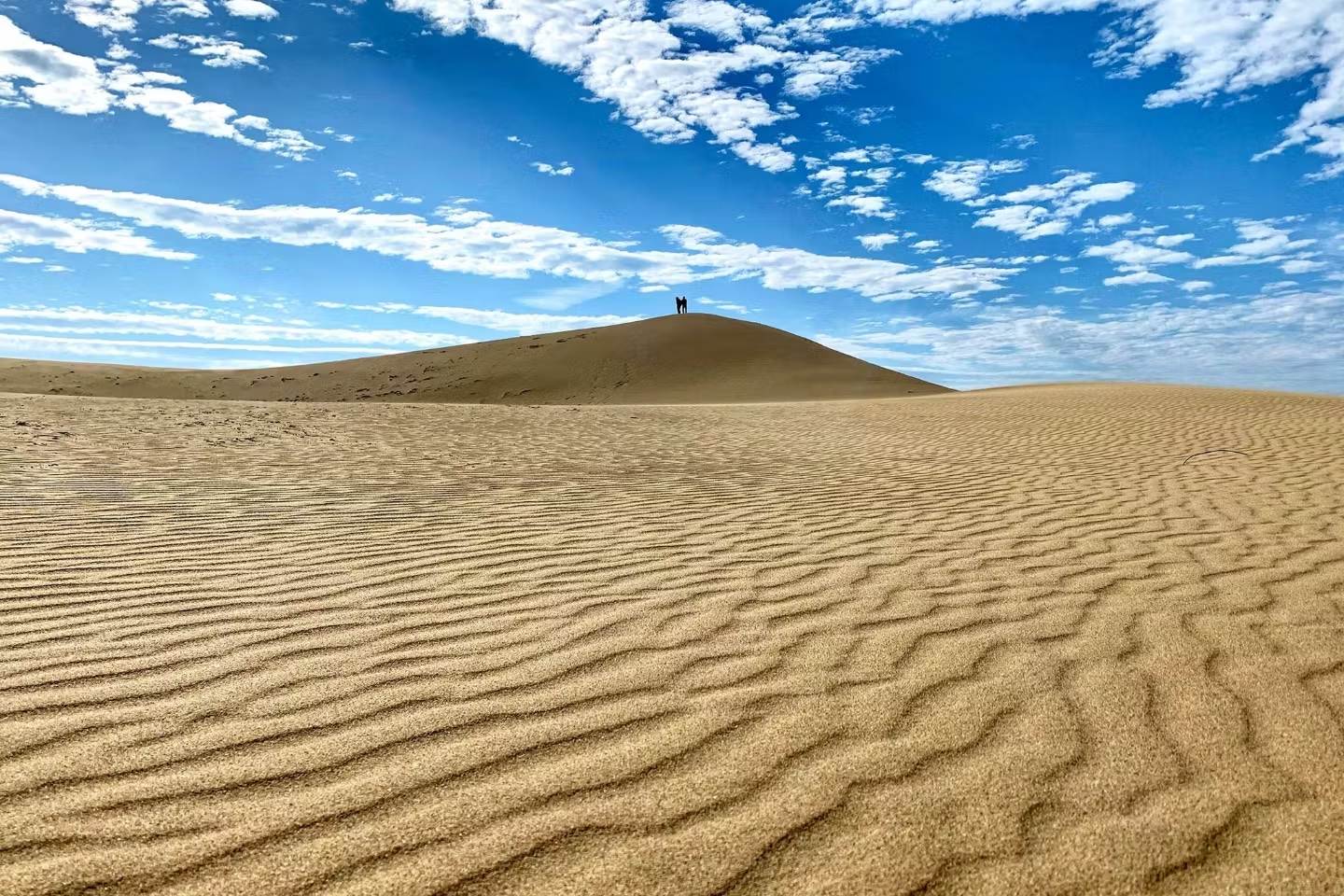
2-day/1-night Tour Embracing the Power of Nature with Views of the Sea and Sand Dunes, and Exploring Towns Enriched by the Blessings of Hot Springs(Tottori-Hyogo)
Last update
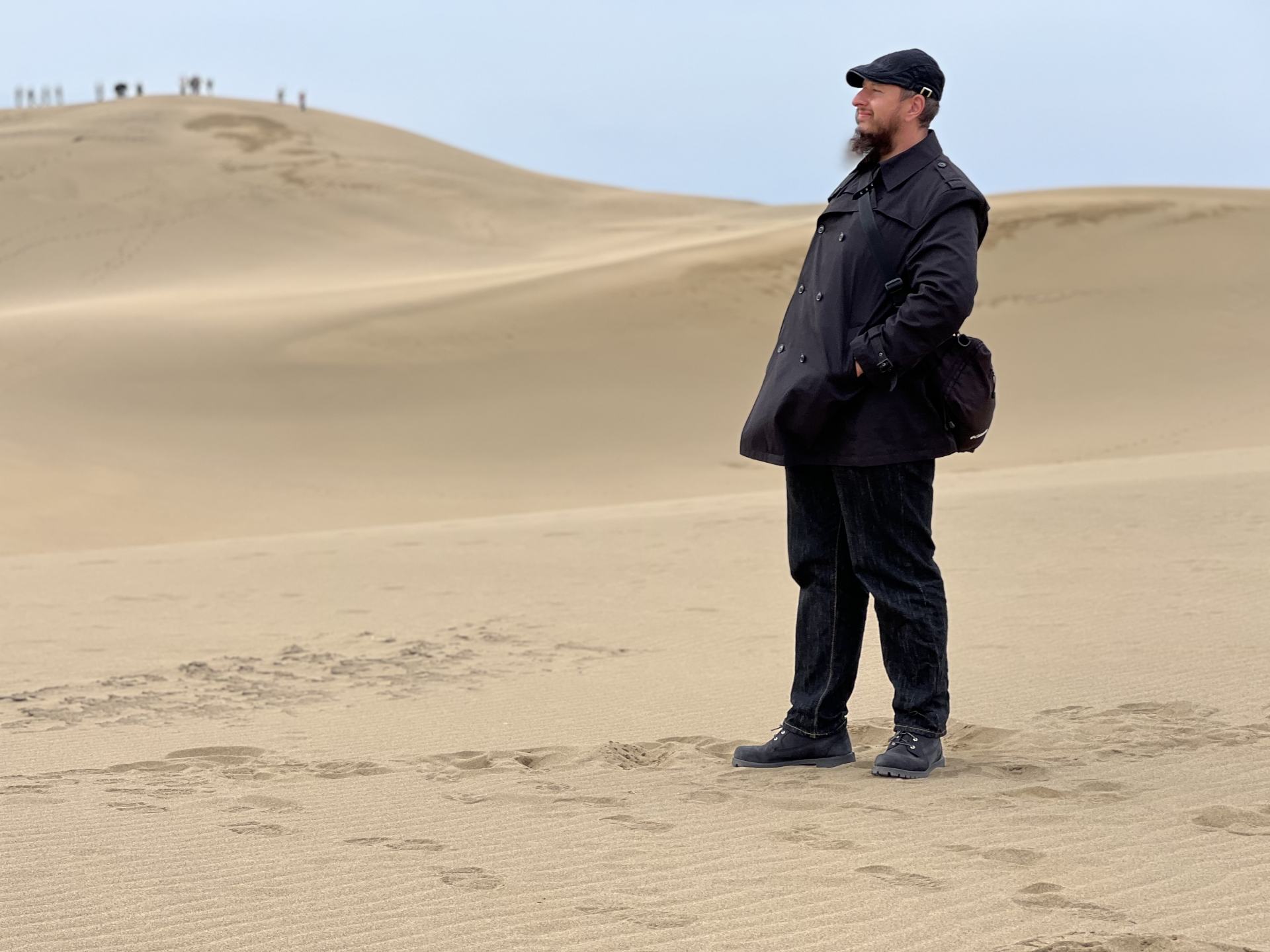
Blown away by the beauty of the sand dunes.
The Kansai region is home to Japan’s ancient capitals of Kyoto and Nara, as well as Osaka, the country’s vibrant “pleasure capital,” and Hyogo Prefecture’s Kobe, renowned for producing the most luxurious beef in the world. As such, the area was one of the first to bounce back almost immediately after the COVID-19 pandemic, and now welcomes tens of millions of tourists annually. However, with a fresh perspective after a prolonged hiatus, questions arose about the sustainability of the region’s previous approach to tourism, including how Kansai can maintain its identity while preserving all that it has to offer for future generations. In our quest for answers, we embarked on a journey to learn about the relationships, limits, and innovations that connect people and the environment.
The Sand Museum (Tottori City, Tottori Prefecture)
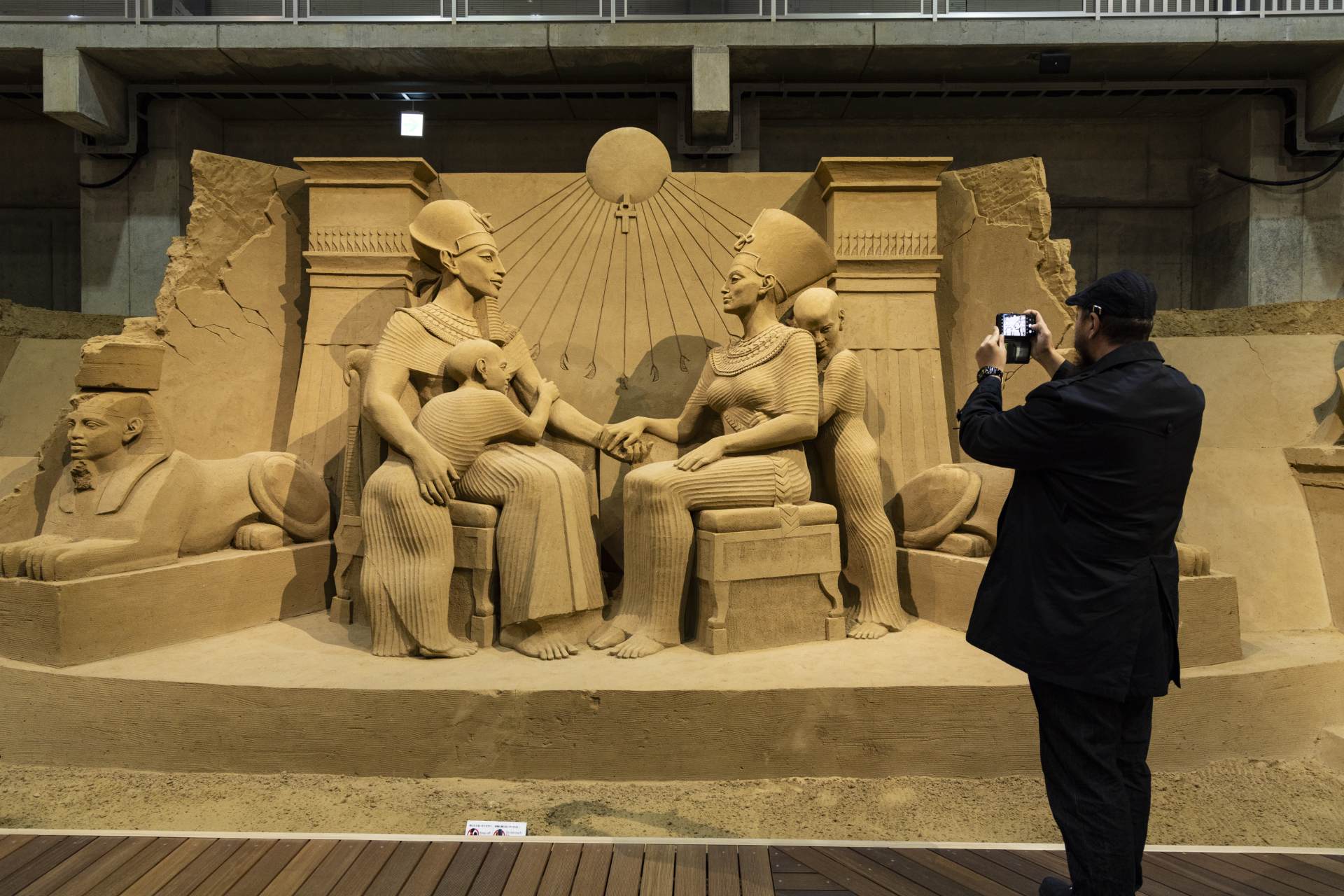
The amount of detail in the sculptures, constructed with just sand, water, and time, is truly breathtaking.
Our travels began in Tottori, Kansai’s neighbor to the west, synonymous with its sand dunes and easily accessible via Tottori Airport. After a 15-minute drive from the airport, we first found ourselves in Ancient Egypt, gazing at awe-inspiring grand temples, bustling bazaars, and millennia-old mummies. These were just a few of the exhibits showcased at our first stop, The Sand Museum, the world’s only indoor facility dedicated to sand sculptures. Each masterpiece is created by a team of international artisans over the course of weeks and months using nothing but Tottori’s fine-grained sand and water from the neighboring Tanega Pond.
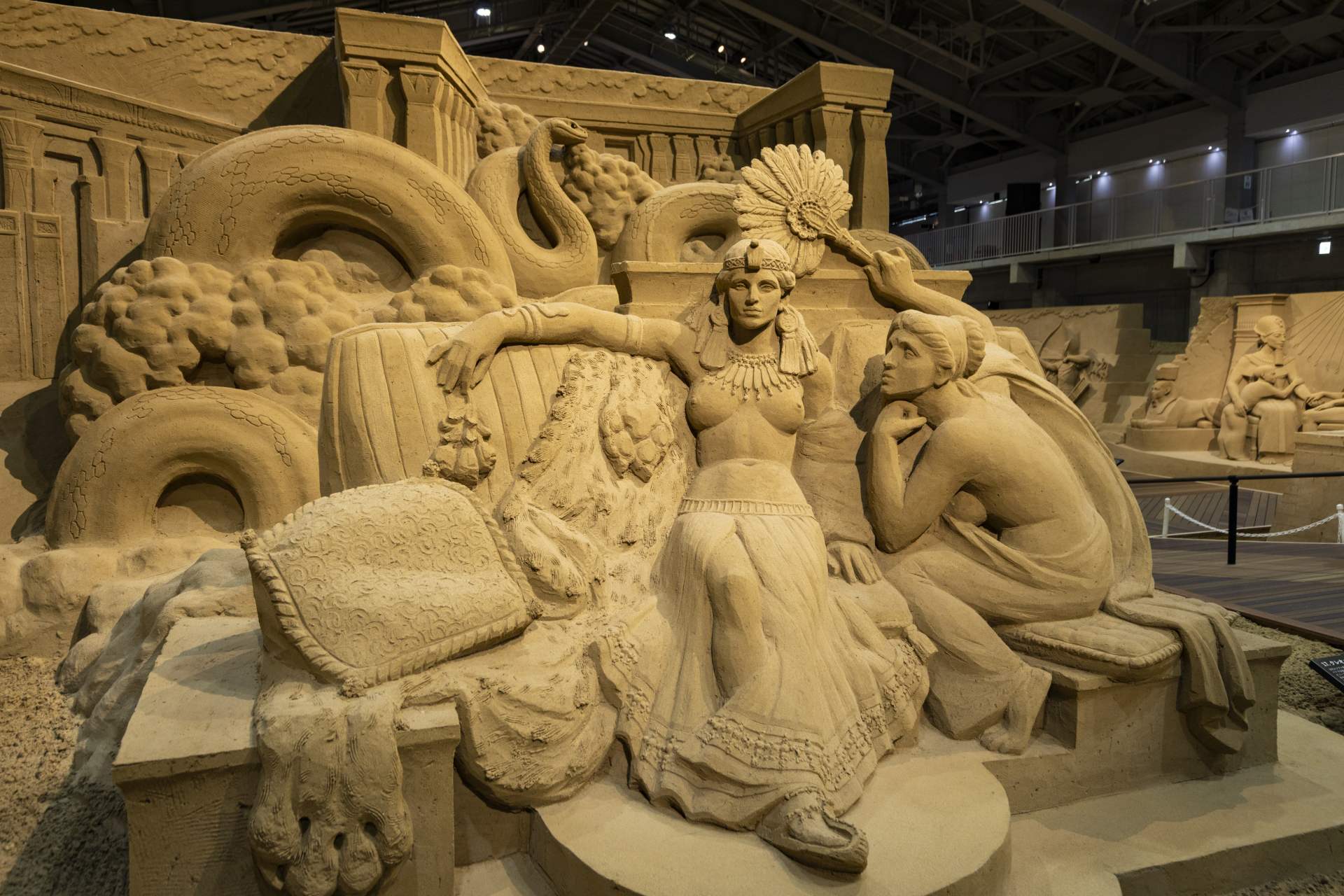
Elevating recycling to an art form.

A statue with remarkably intricate expressions, almost unbelievable that its made of sand.
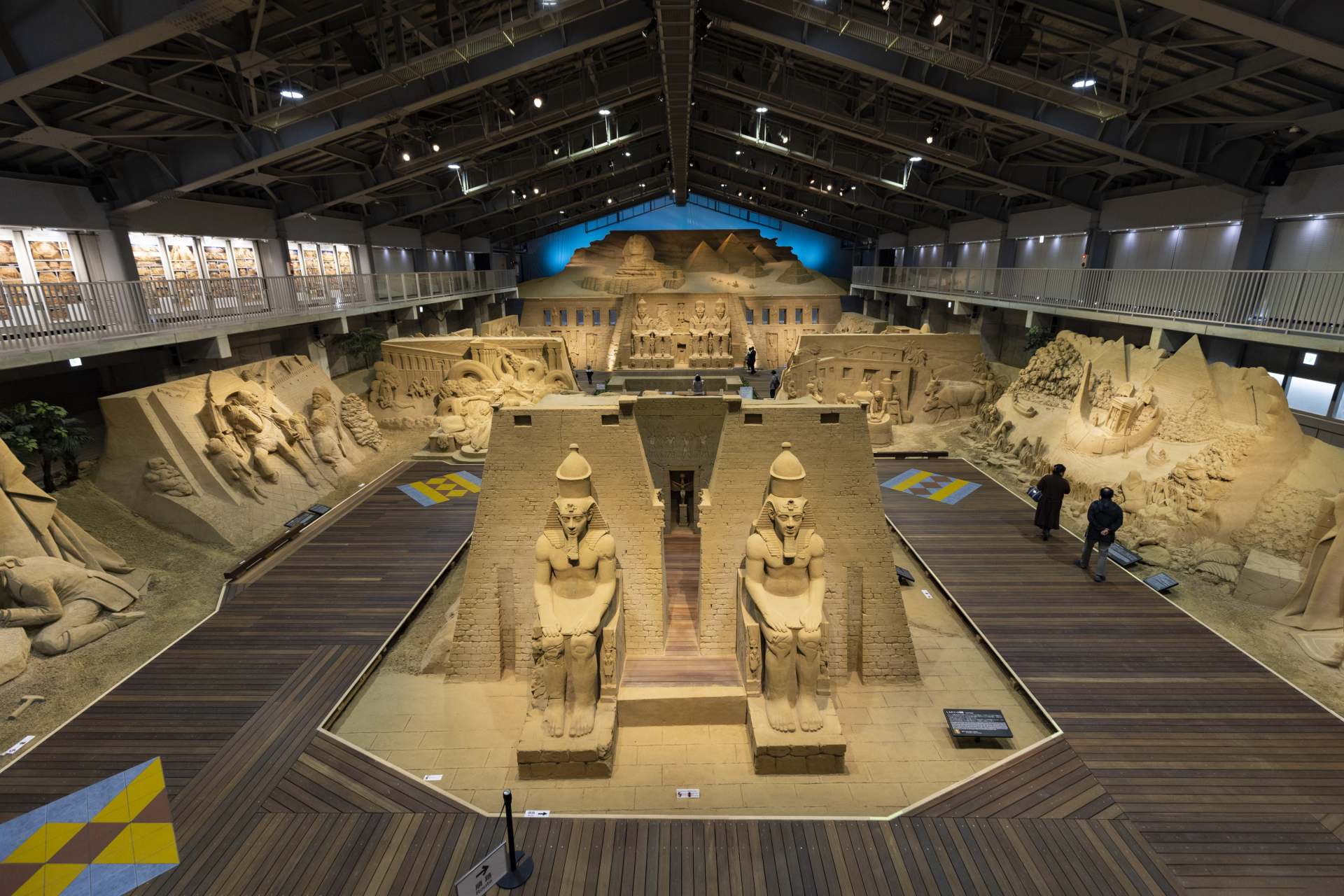
The Sand Museum takes visitors back in time to Ancient Egypt.
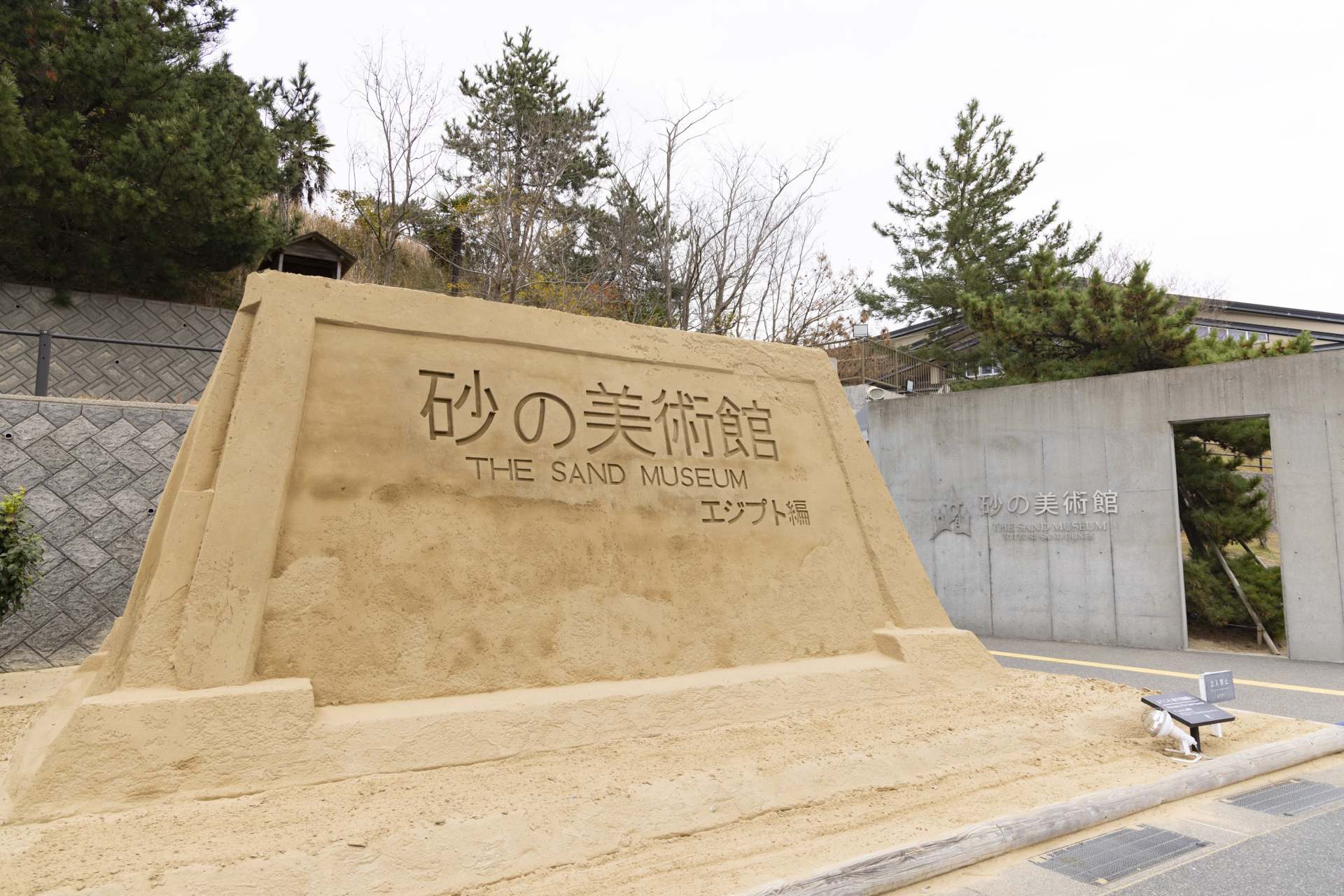
The Entrance of the Sand Museum.
And once an exhibition is over, which for “Egypt” will be January 3, 2024, the sculptures undergo a fascinating cycle of deconstruction and recreation in the next showcase, which is scheduled to be “France.” In this way, visitors to Tottori can traverse the globe through sand and experience once-in-a-lifetime art that blends recycling with the Japanese appreciation of the beauty of impermanence.
Tottori Sand Dunes,San’inkaigan National Park (Tottori City, Tottori Prefecture)
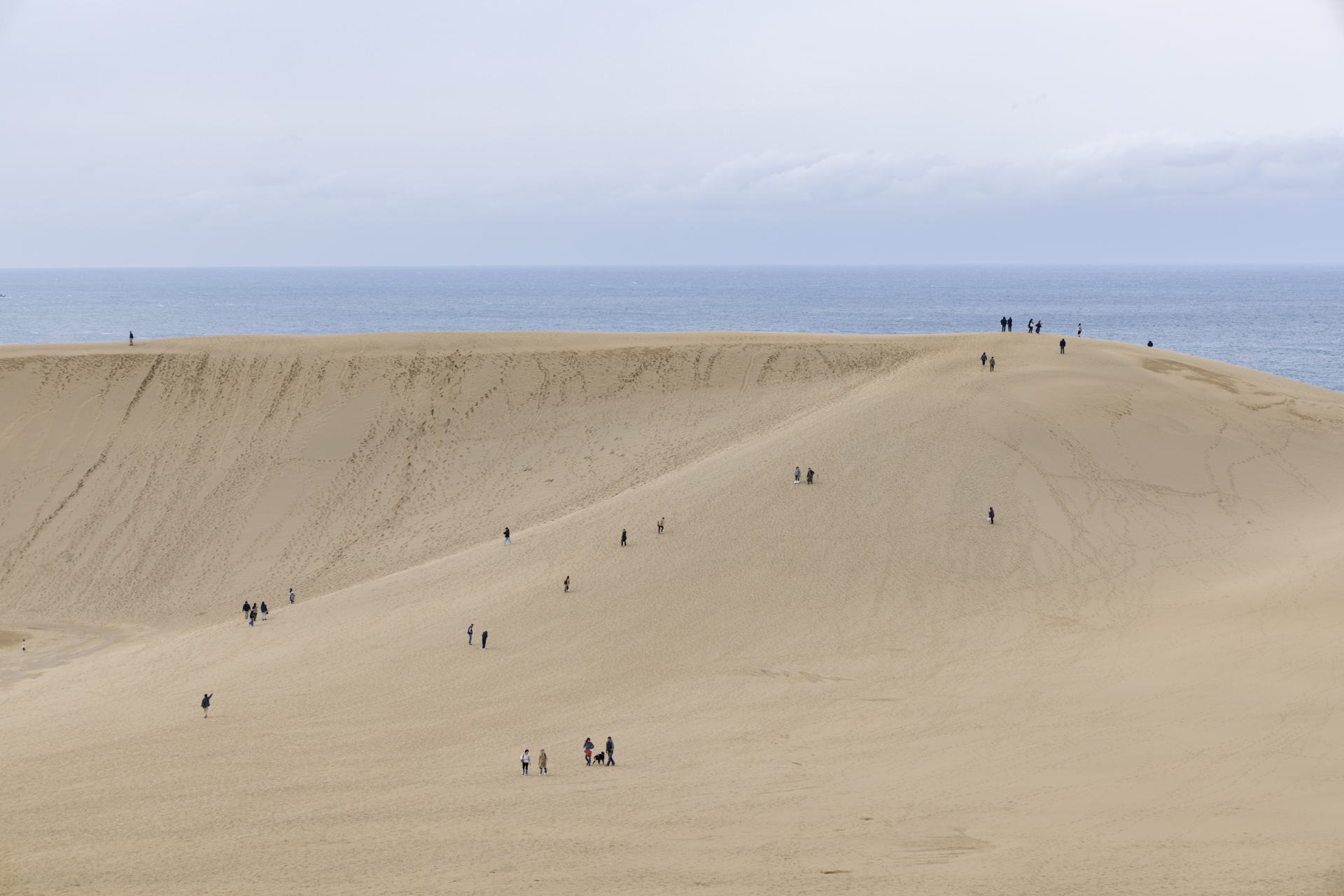
Humans look like little ants walking on the openly large and wide sand dunes.
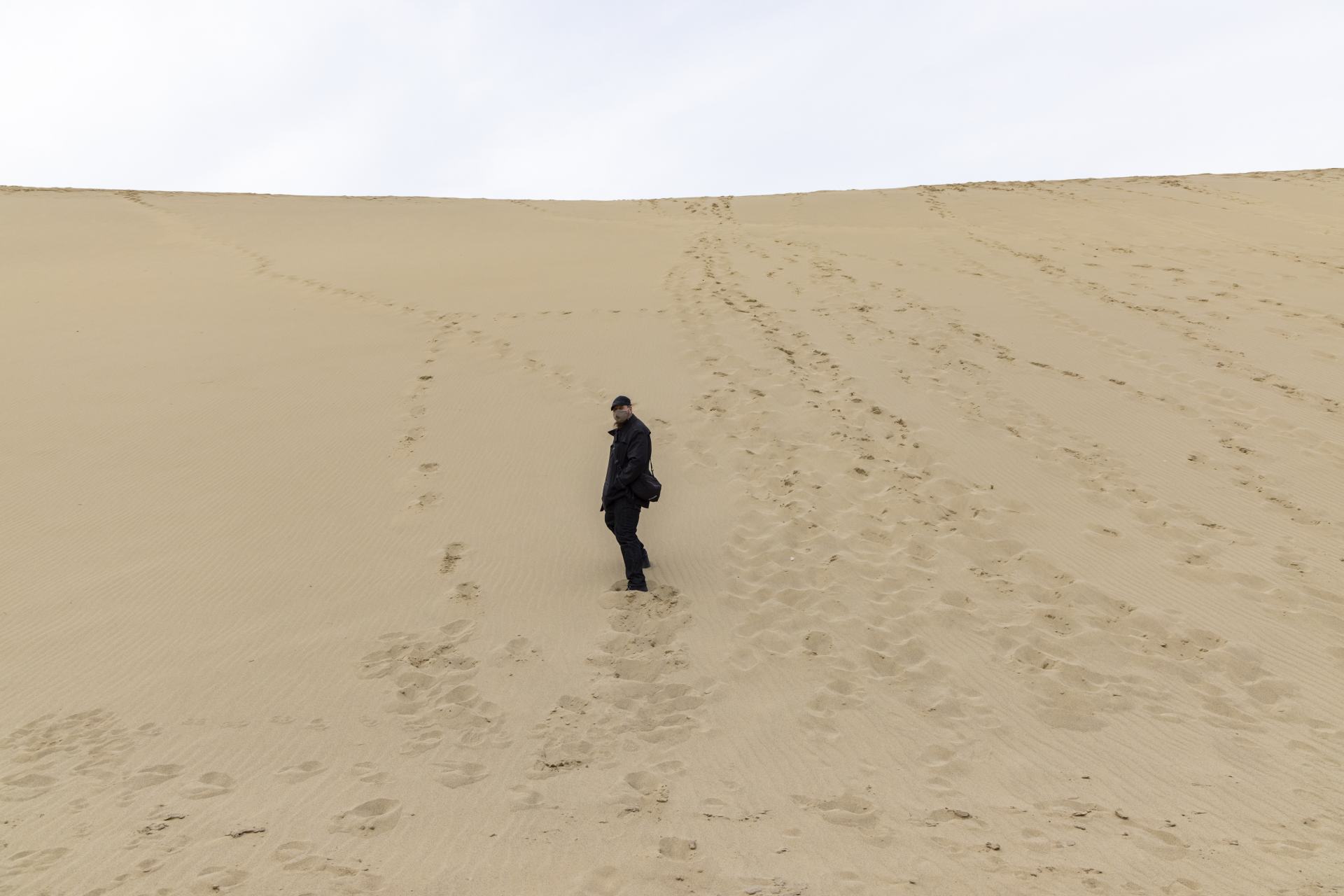
Nature reigns supreme and the people look small at the magnificent Tottori Sand Dunes.
After indulging in a lunch of local specialties such as crab sushi and Tottori wagyu beef, our journey took us to Tottori’s famous sand dunes, a symbol of the prefecture and part of the San’inkaigan National Park. Contrary to popular belief, our guide pointed out that the dunes are not a desert, but rather the result of natural forces over 100,000 years. The wind, acting as the grand architect, constantly reshapes and ripples these majestic vistas from sand carried by the Sendai River into the Sea of Japan and deposited by waves offshore, from where strong winds carry it inland.
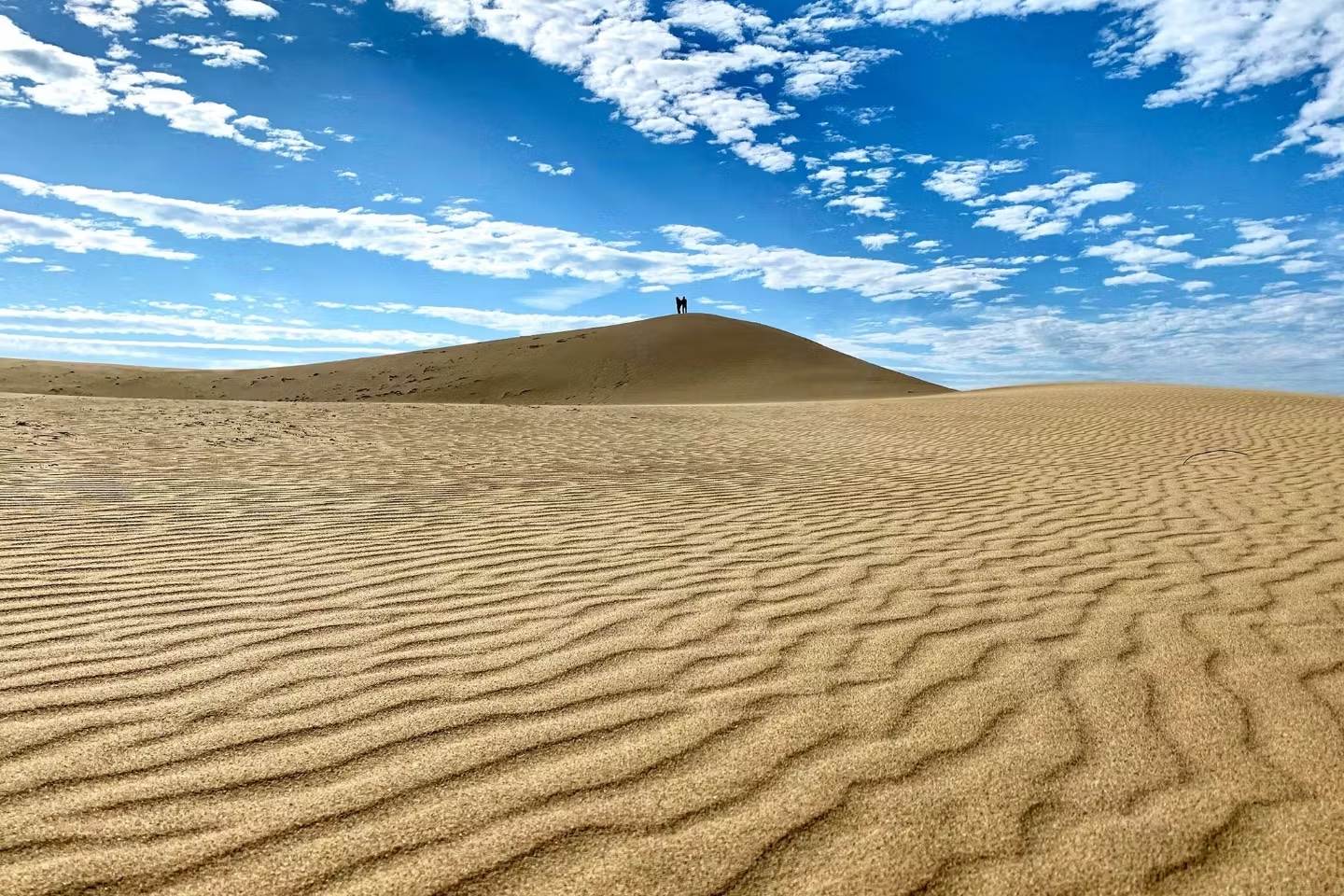
The contrast between the blue skies and the brown sand is stunning.
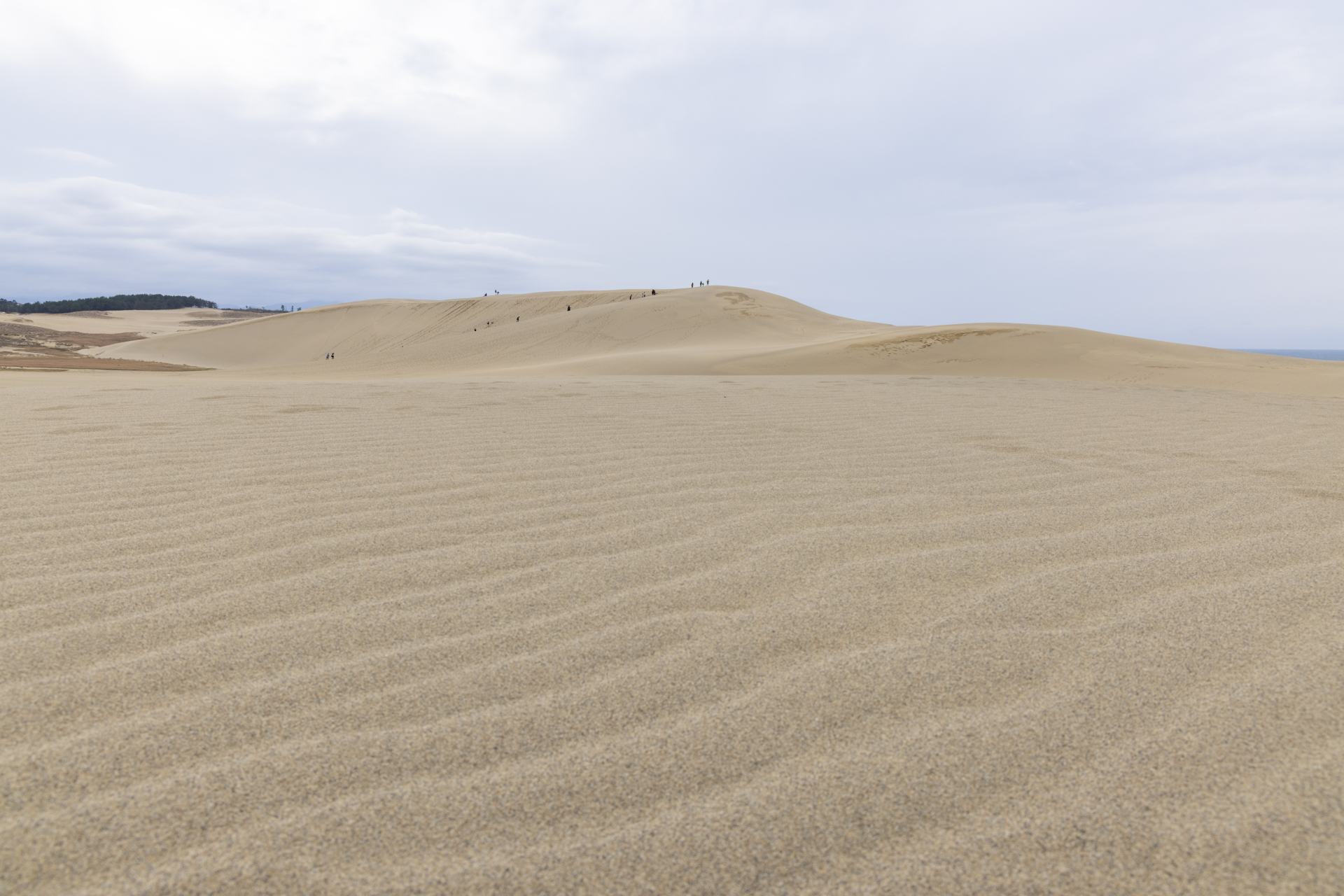
The beautiful sand dunes of Tottori.
Exploring the 16-kilometer Tottori Sand Dunes, which are 2.4 kilometers wide, will help you gain profound appreciation for the power and resilience of nature. Caution is advised, as vehicles are restricted for protecting the dunes, making it crucial to avoid injury. In case of emergencies, assistance relies on dedicated rangers, who also safeguard the delicate ecosystem from any harm or disturbance.
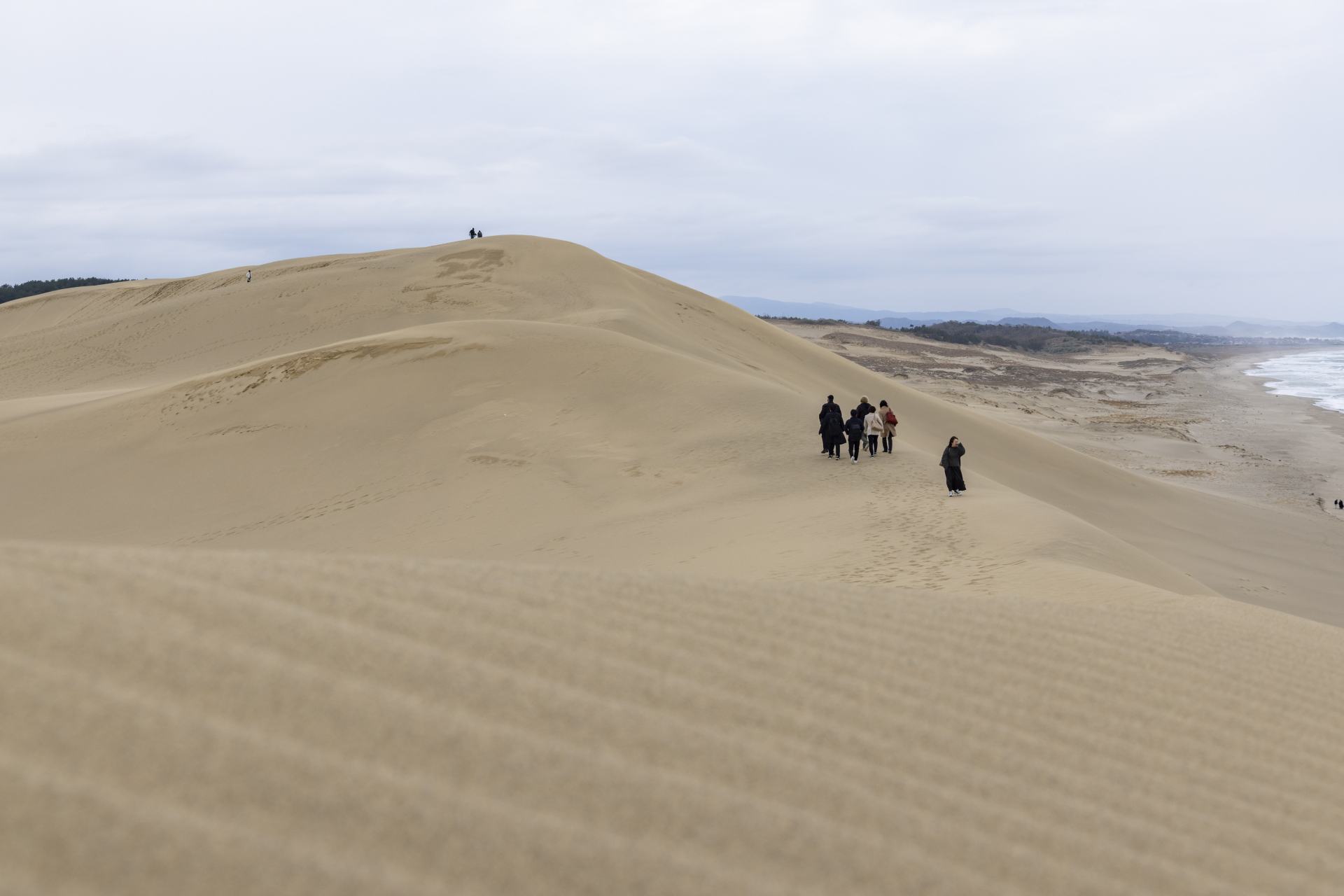
“Horse’s Back” dune.
That’s not to say the dunes are delicate and need to be treated like glass. Quite the opposite. We felt this most acutely after trudging up the grand “Horse’s Back” dune, our shoes sinking into the sand with each labored step, only to have the wind quickly and callously erase our footsteps, the evidence of our struggles.
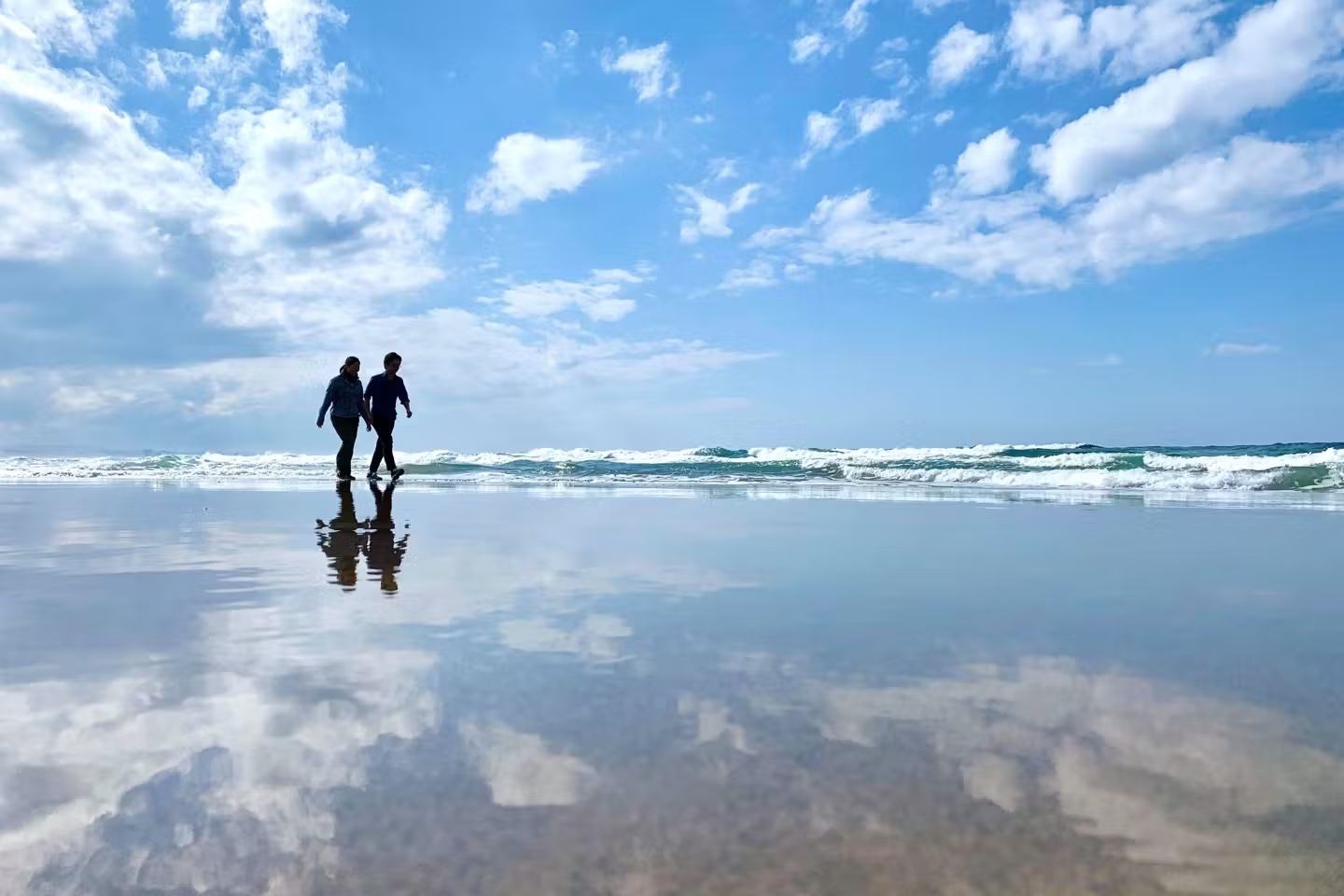
Shot taken as part of the photography tour we participated in.
There are many ways to enjoy your time at the Tottori Sand Dunes and on the Uradome coast. For those into thrilling activities, you can surf, kayak, paraglide, sandboard, or try out the fat-tired bikes. There are more relaxing activities also, such as yoga, standup paddle boarding, and even a photography tour. For an entire list of activities and booking options, Tottori Activity can help.
Yumura Onsen (Shinonsen, Hyogo Prefecture)
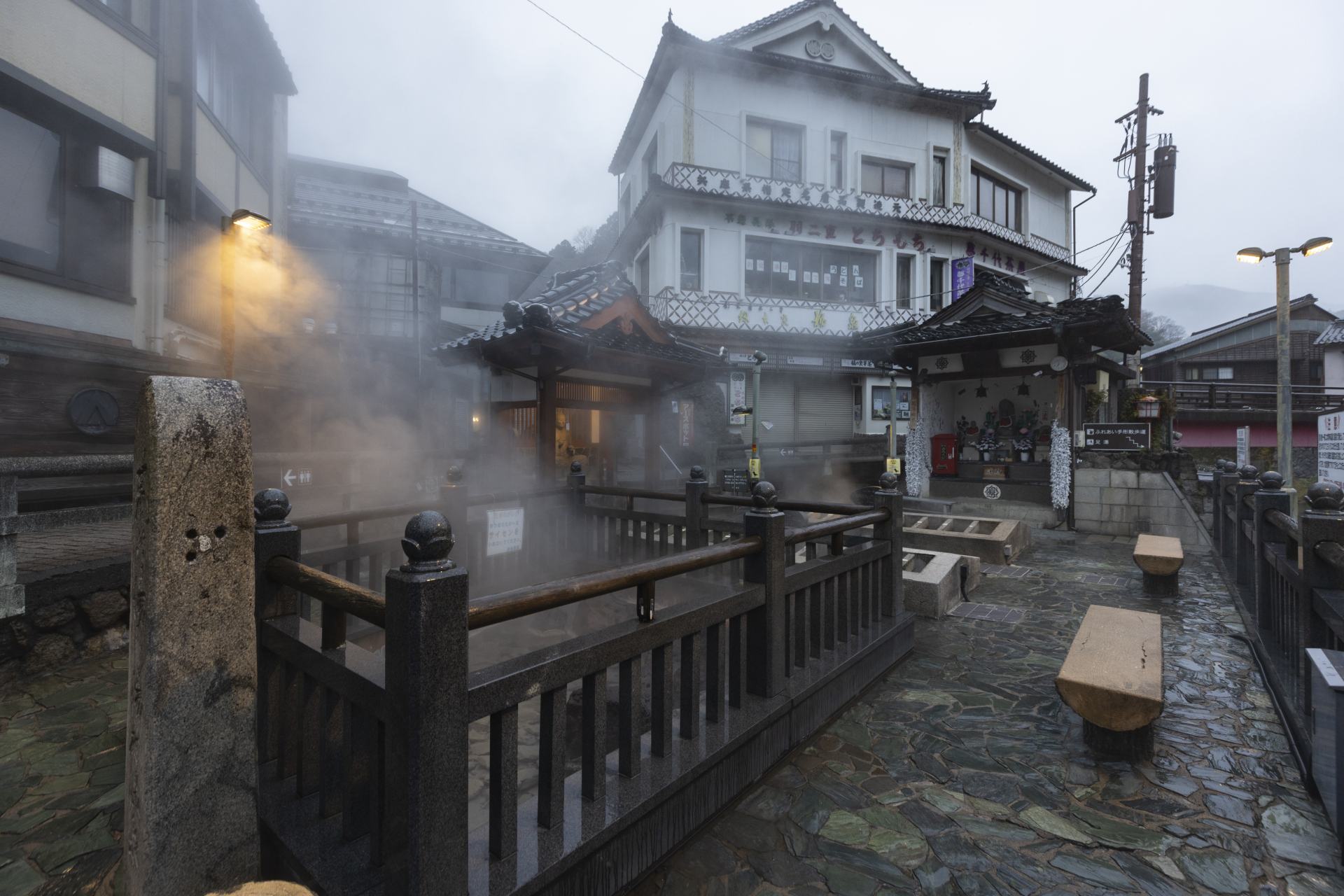
The onsen town always has a misty look thanks to the steam.
From Tottori, we ventured on to the village of Yumura Onsen in northern Hyogo Prefecture, home to one of Japan’s most captivating hot springs. Every minute, 470 liters of water escape through the Yumura Fault, penetrating deep underground, where the Pacific Plate heats the water to over 300 degrees Celsius. By the time it reaches the surface, it has cooled down to 98 degrees Celsius, one of the hottest in the country, befitting a place called “Yumura,” which means “Hot Water Village.”
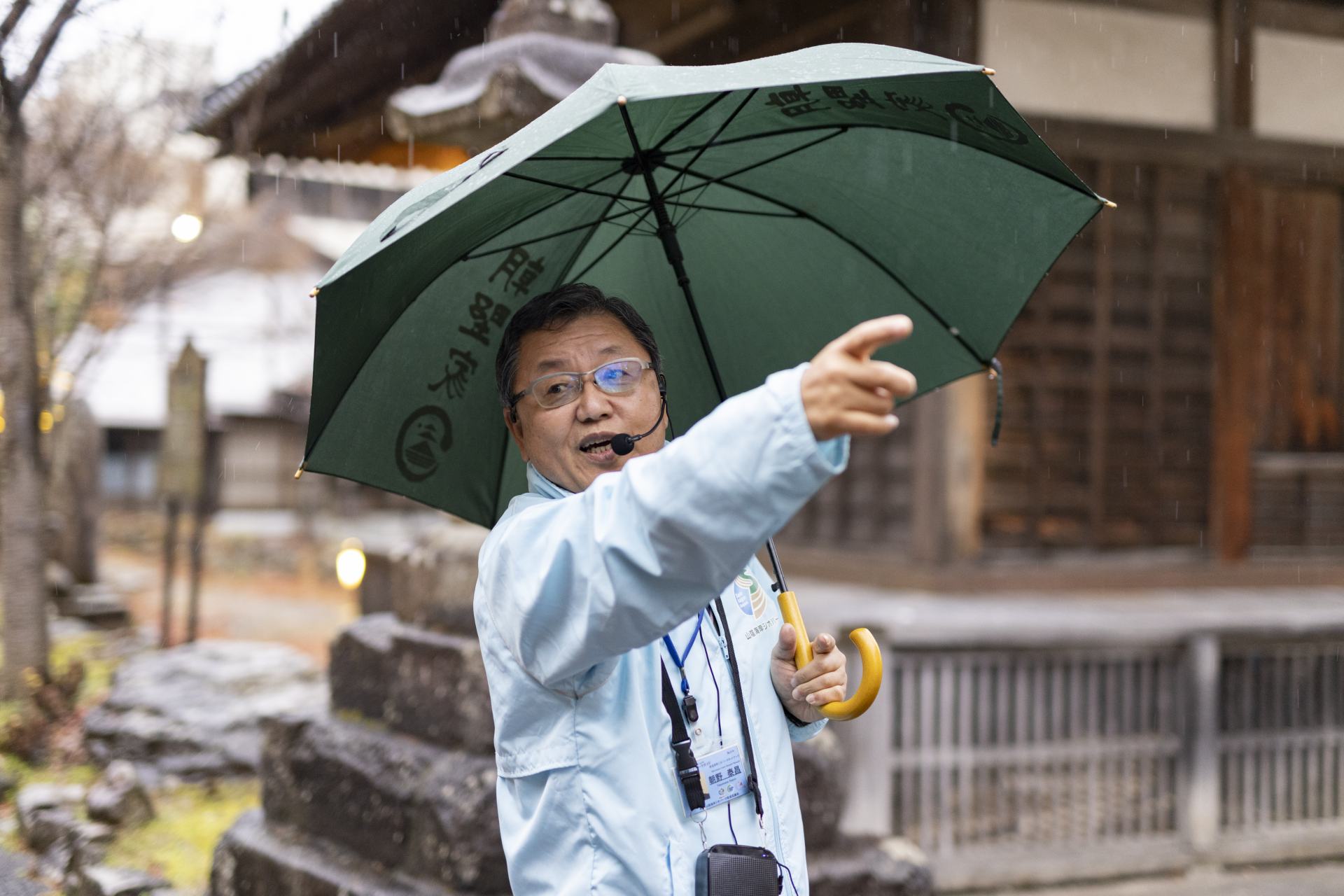
The Arayu provides free natural boiling water and a pleasant warmth on cold days.
Because Yumura’s eponymous treasure is heated by tectonic pressure rather than volcanic activity, its hot spring water is colorless, unadulterated, and only slightly alkaline, making it suitable for everyday use. After cooling down naturally to 65 degrees in above-ground tanks, the water is piped to separate faucets in regular households and used for laundry, dishwashing, and hair washing, which we’re told does wonders for your skin. The water is perfectly safe to drink, and in the past people regularly used the uncooled 98-degree water in the public “Arayu” hot spring for cooking. We gave it a try ourselves.
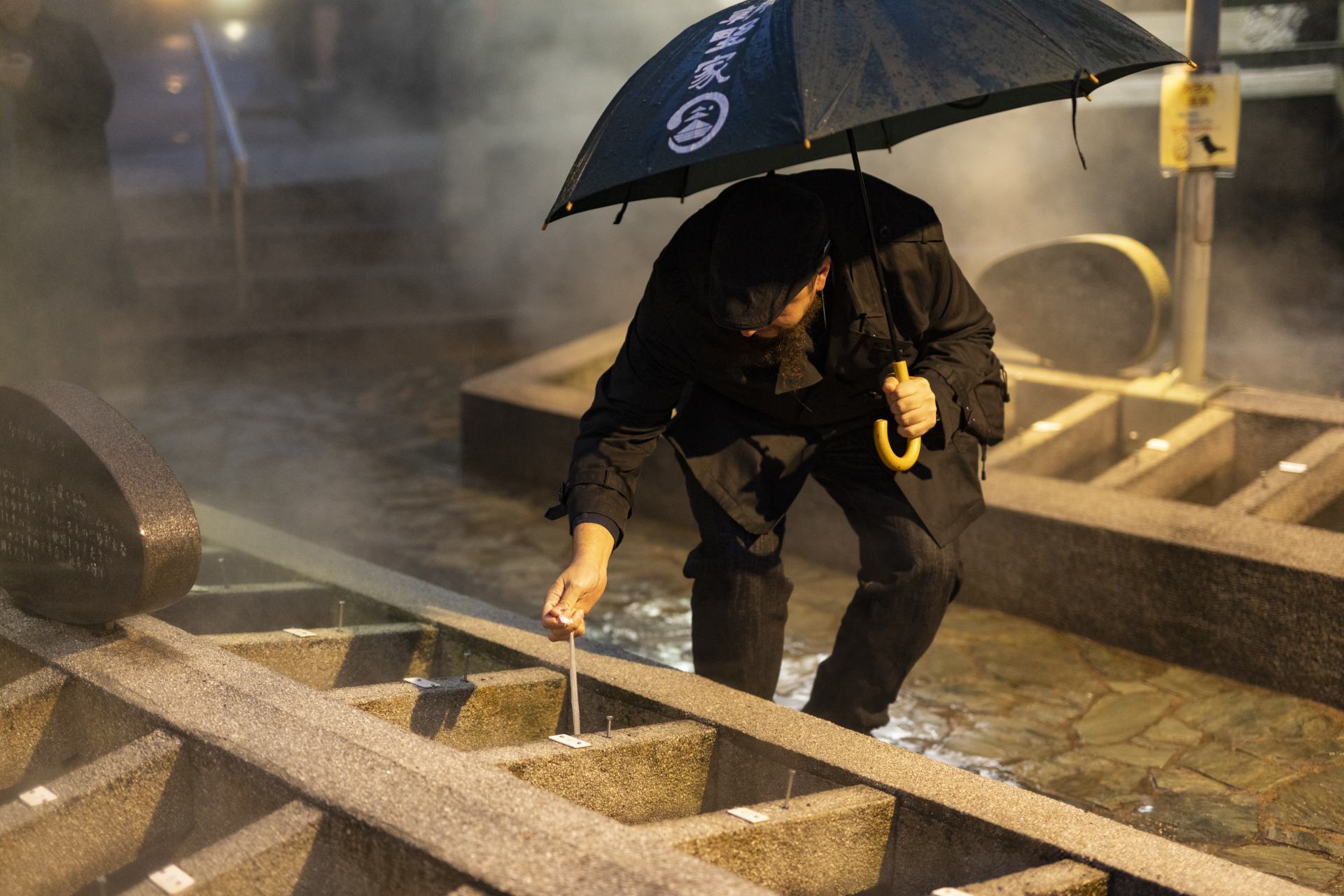
Locals and tourists alike, use the boiling water for their meals.
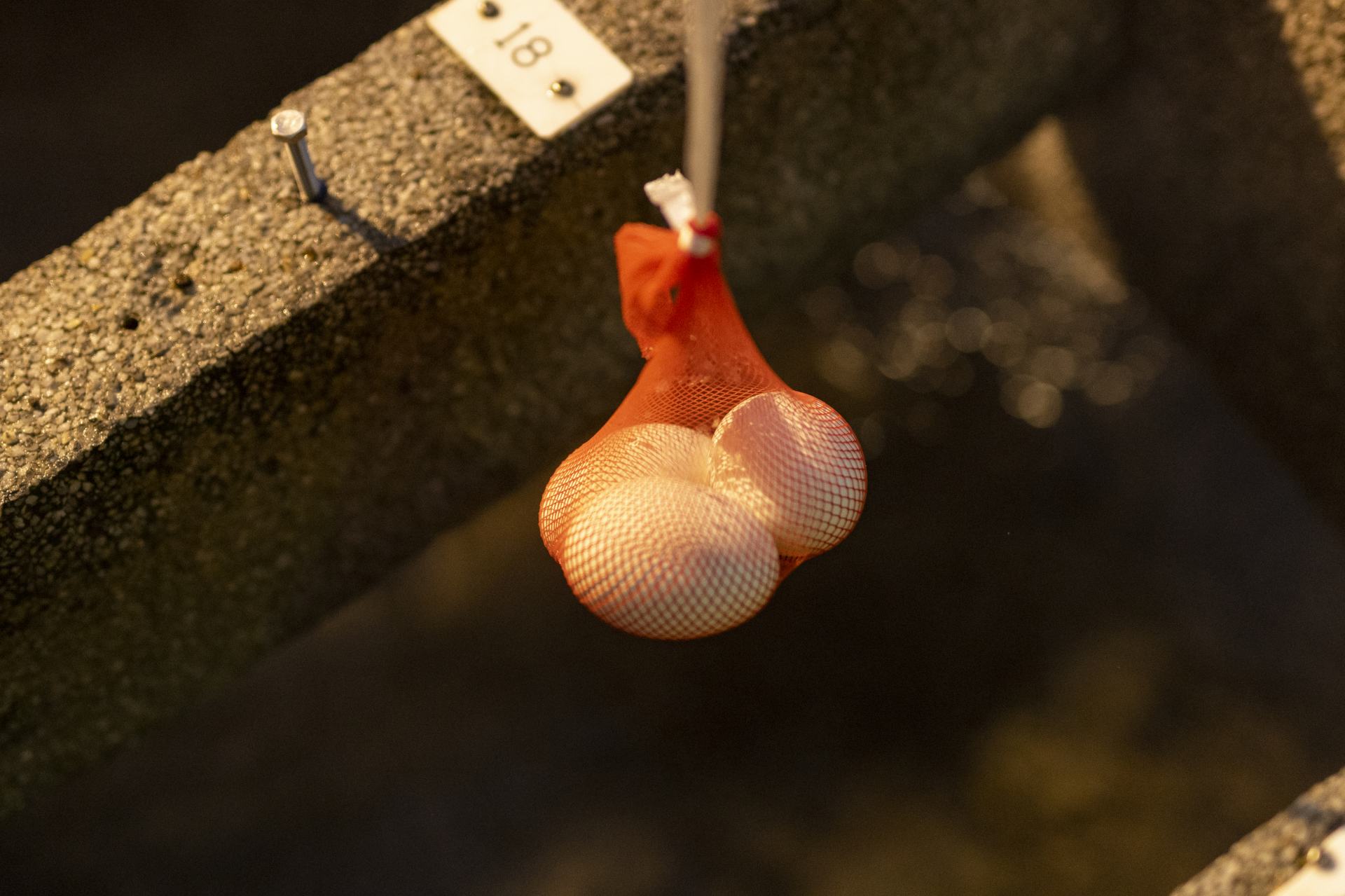
Cooking eggs in Yumura’s Arayu public hot spring source.
Located in the town’s center, anyone can use nets on a hook to boil eggs or cook vegetables, or to heat up a cup of a drink. Some facilities, such as Asanoya, a Yumura Onsen hotel shaped like a Japanese castle reminiscent of Spirited Away, even use hot springs for indoor heating and cooling through evaporation. With experiments underway to generate electricity from hot water, Yumura is a model for making the most of sustainable resources.
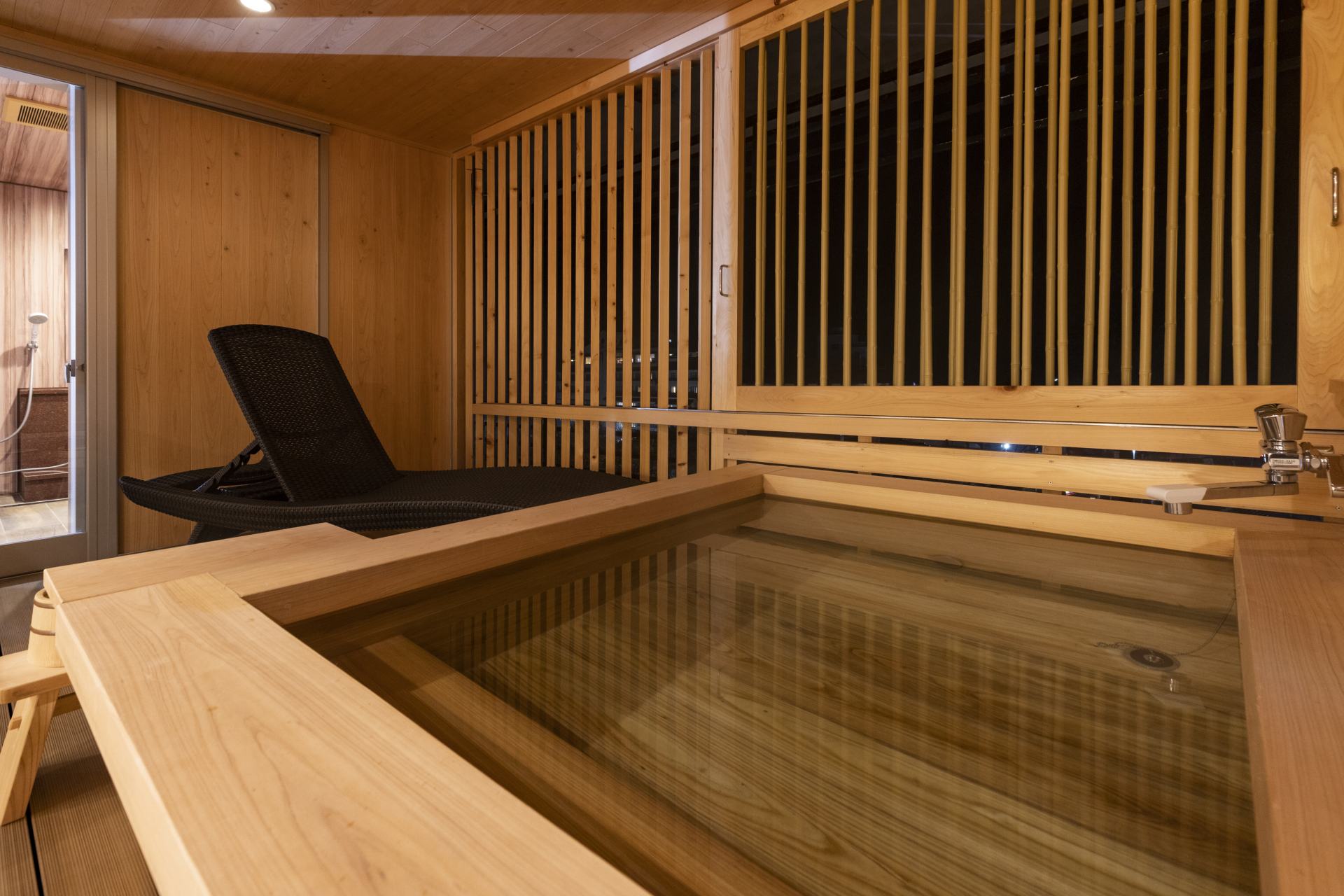
Stay at Asano-ya Hotel in Yumura Onsen.
Takeda Castle Ruins (Tamba-Sasayama, Hyogo Prefecture)
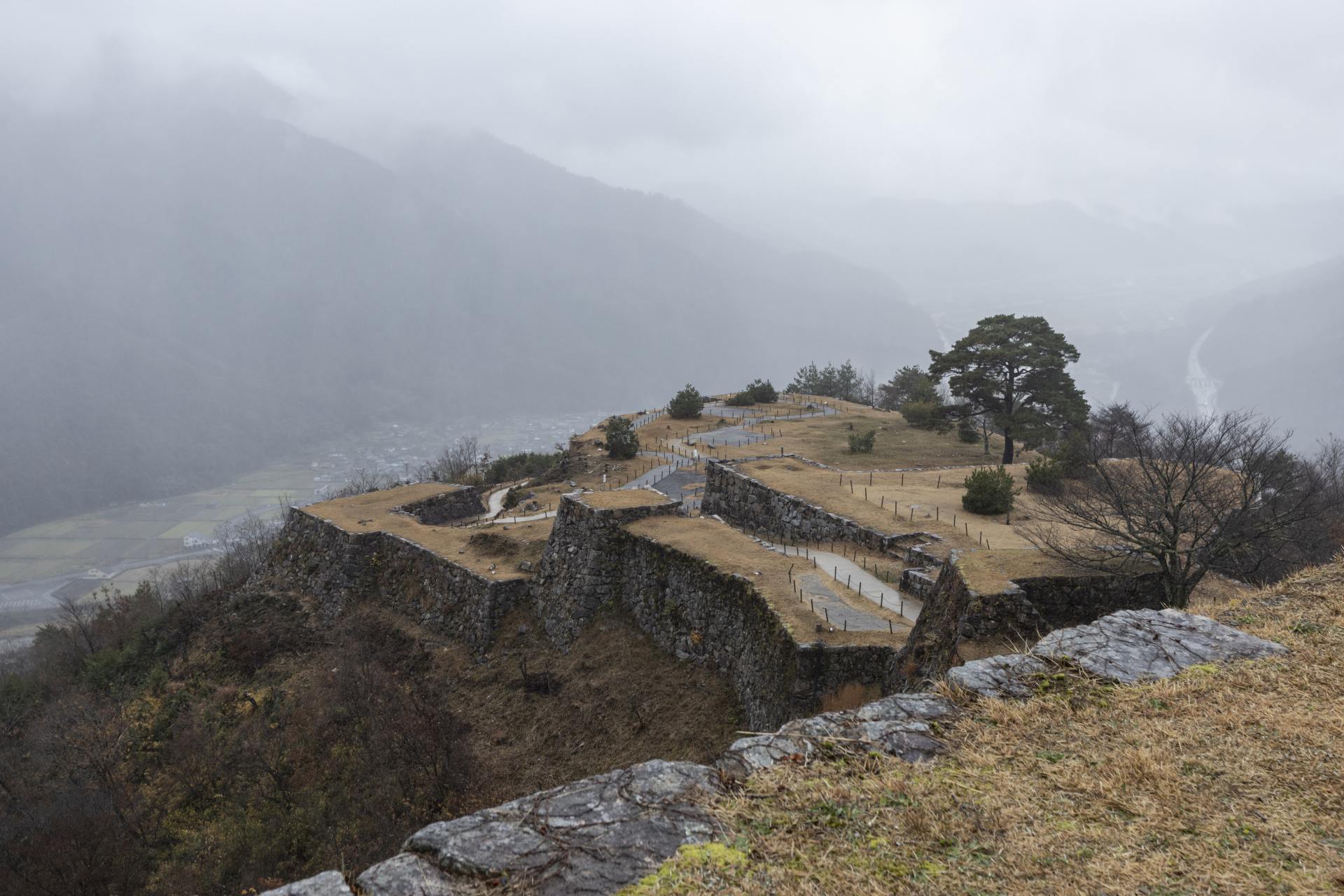
Takeda Castle Ruins.
On the second day of our travels, we turned our attention to earth and fire after a brief stop at the Takeda Castle Ruins, Japan’s famous “Castle in the Sky.” The reason why it is called as such is because of the way the castle ruins appear to be floating clouds at certain times of the year and day. The best time to see this phenomenon is said to be in the fall, during October and November, around sunrise.
Maekawa (Tamba-Sasayama, Hyogo Prefecture)
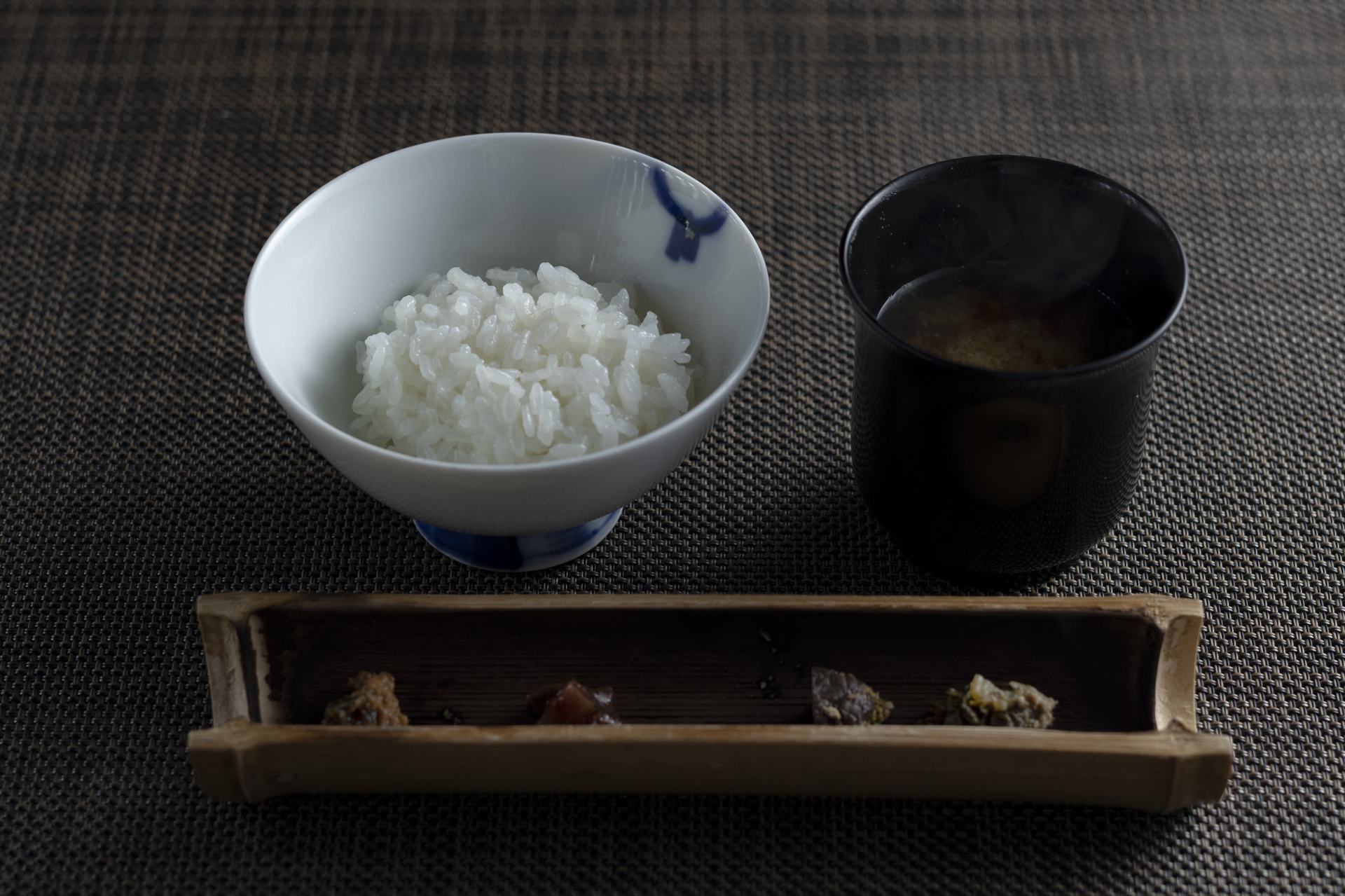
Simple at first glance, but an explosion of flavor!
After the castle ruins, we stopped at Maekawa for lunch. Housed in a historic home with wooden interior, the restaurant emanated a warm and cozy experience, though certainly not reflected in the temperature. The restaurant specializes in utilizing local Tamba-Sasayama ingredients for their dishes. As such, the multi-course lunch we indulged in only listed the local ingredients used in each dish, which made for an interesting guessing game meal experience. Using rustic-ware to compliment the meal, this unassuming restaurant, with the owner and chef being proudly from Tamba-Sayayama, gently brings out the beauty of the area.
Sasayama Castle (Tamba-Sasayama, Hyogo Prefecture)
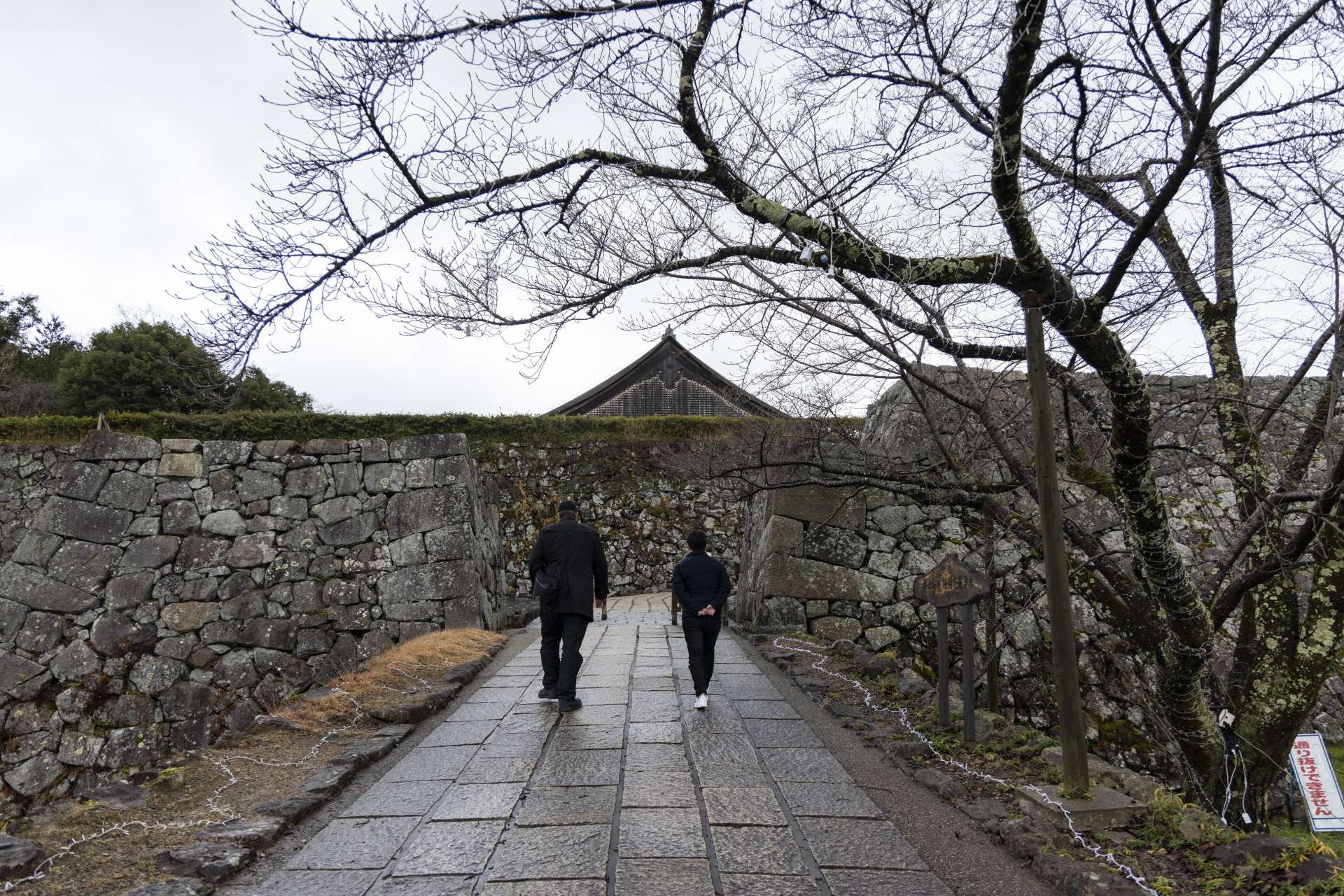
Sasayama Castle.
We also visited Sasayama Castle, a popular location for shooting period films such as The Legend & Butterfly. Renowned for its historical significance, Sasayama Castle stands as a testament to sustainable practices, fostering a vibrant connection with its community through ongoing cultural events, workshops, and preservation efforts, ensuring its historical legacy thrives for generations to come.
The Museum of Ceramic Art (Tamba-Sasayama, Hyogo Prefecture)
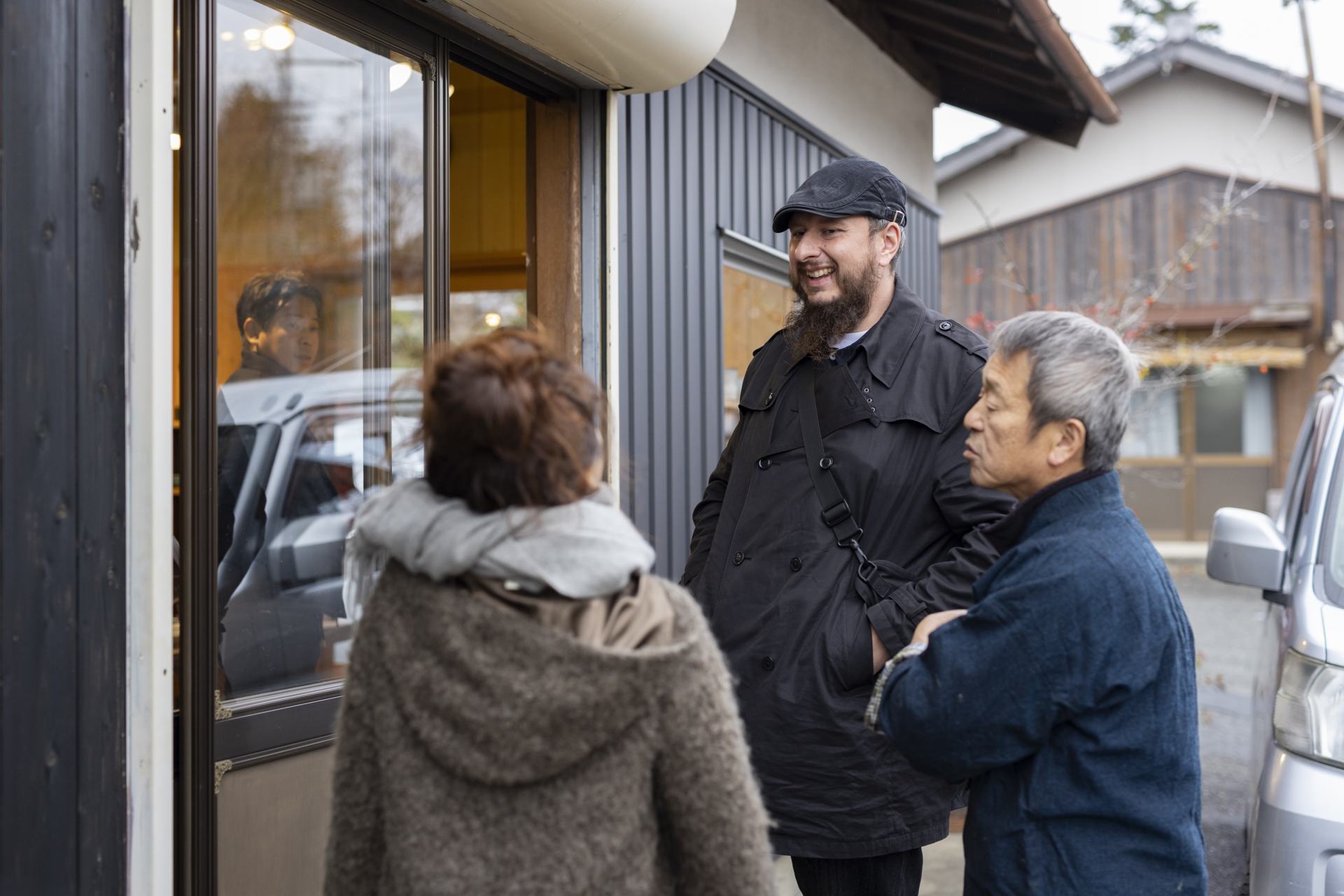
Chatting with the craftsmen of Tamba-Sasayama.
Tamba ware pottery (or Tamba-yaki) is one of the Six Ancient Kilns, a title given to the most remarkable ceramics and porcelains in Japan. A great place to learn about this type of pottery is the Museum of Ceramic Art, Hyogo in Tamba-Sasayama, one of the two main centers, along with Tachikui, where the ware is produced. There, we learned about the ongoing efforts to source Tamba-yaki clay in an ecological and sustainable manner, and the use of natural glazing techniques that date back more than 800 years.
Shinsui Kiln (Tamba-Sasayama, Hyogo Prefecture)
Despite its ancient heritage, Tamba-yaki is not rigidly bound by convention and comes in an infinite variety of shapes for all kinds of uses, from everyday utensils to highly prized tools for the Japanese tea ceremony. To see it up close, we visited the Shinsui Kiln located along the Shitodani River, an area that houses some 60 pottery studios. Our guide was second-generation potter Ichino Shinsui, whose simple and elegant creations enchanted us from the moment we entered his shop. But it was a tour of his workshop that really warmed our hearts.
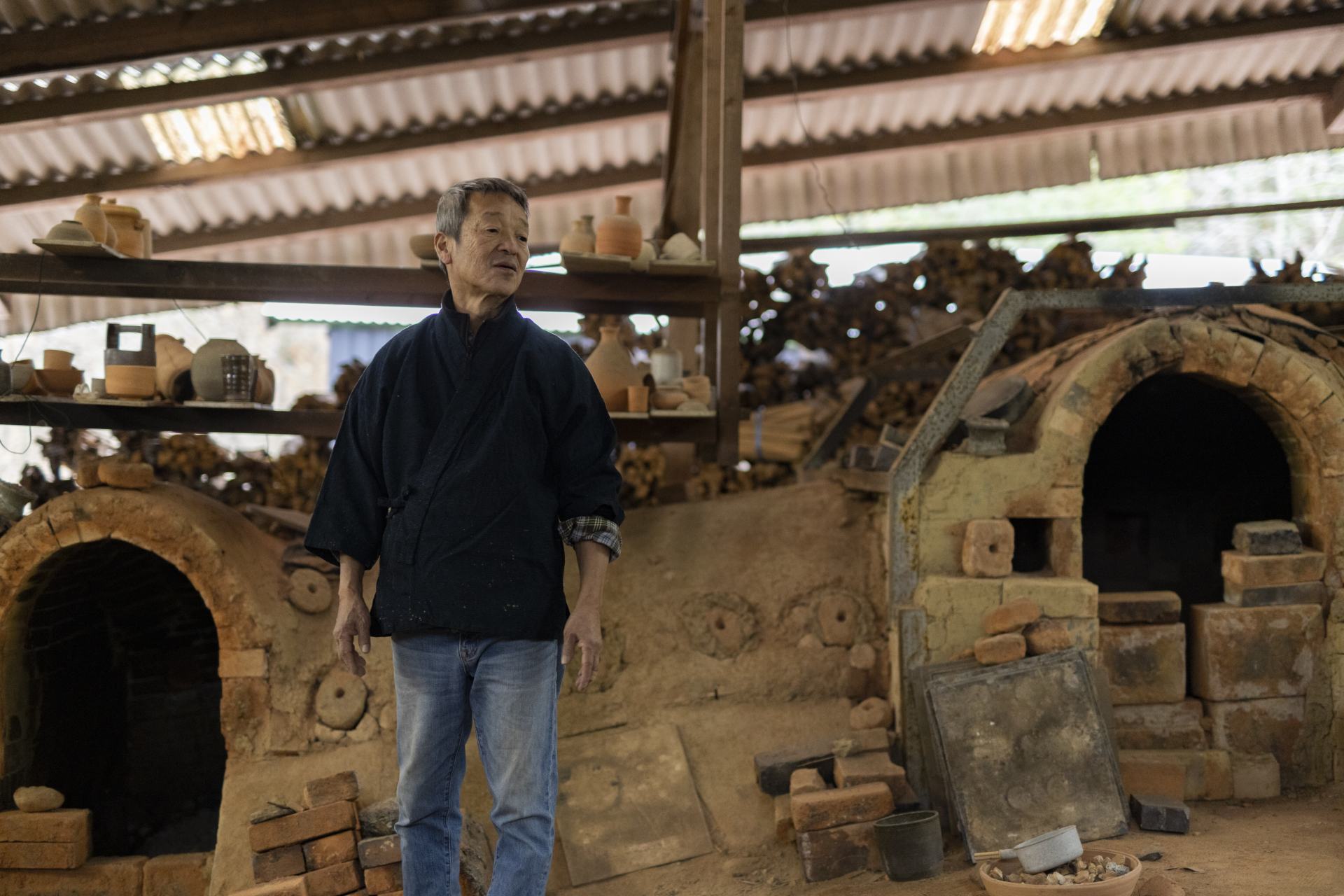
Potter Ichino Shinsui next to the kilns he built with his own two hands.
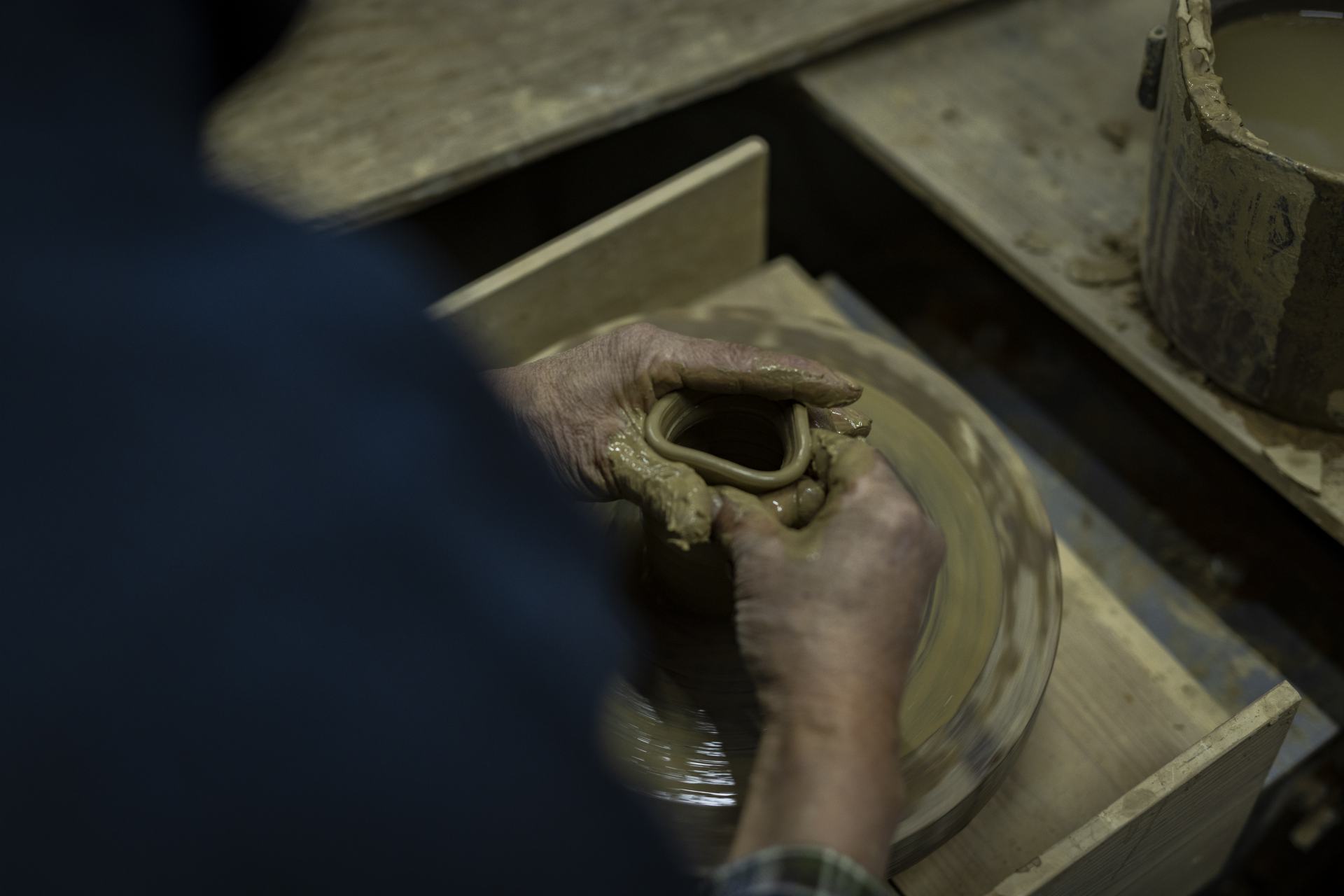
Tamba ware: rising from the soil of Tamba-Sasayama.
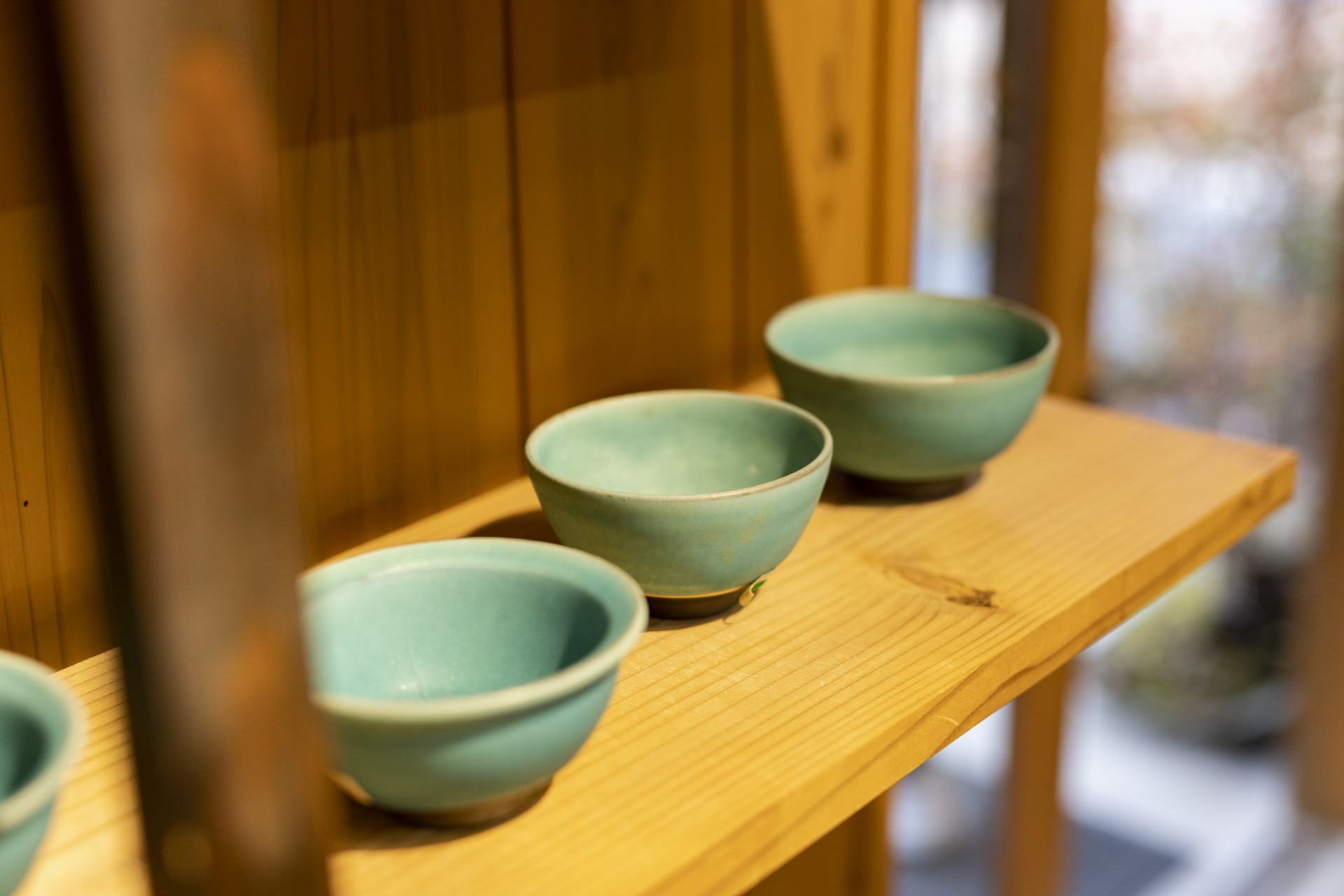
Tamba ware after their completion.
Not only does the artist make all of his creations one at a time, making sure that no two pieces are exactly alike, he even built his own kilns by hand. And then, as we watched him at work, it hit us – the true meaning of sustainability. Not only is it about a balance between humans and the environment, recognizing and managing limits, and the like, it’s also about passion and respect for one’s work and surroundings. Start with that, and sustainability will follow. One day we’d like to see this lesson applied not only in Kansai or Japan, but all over the world.
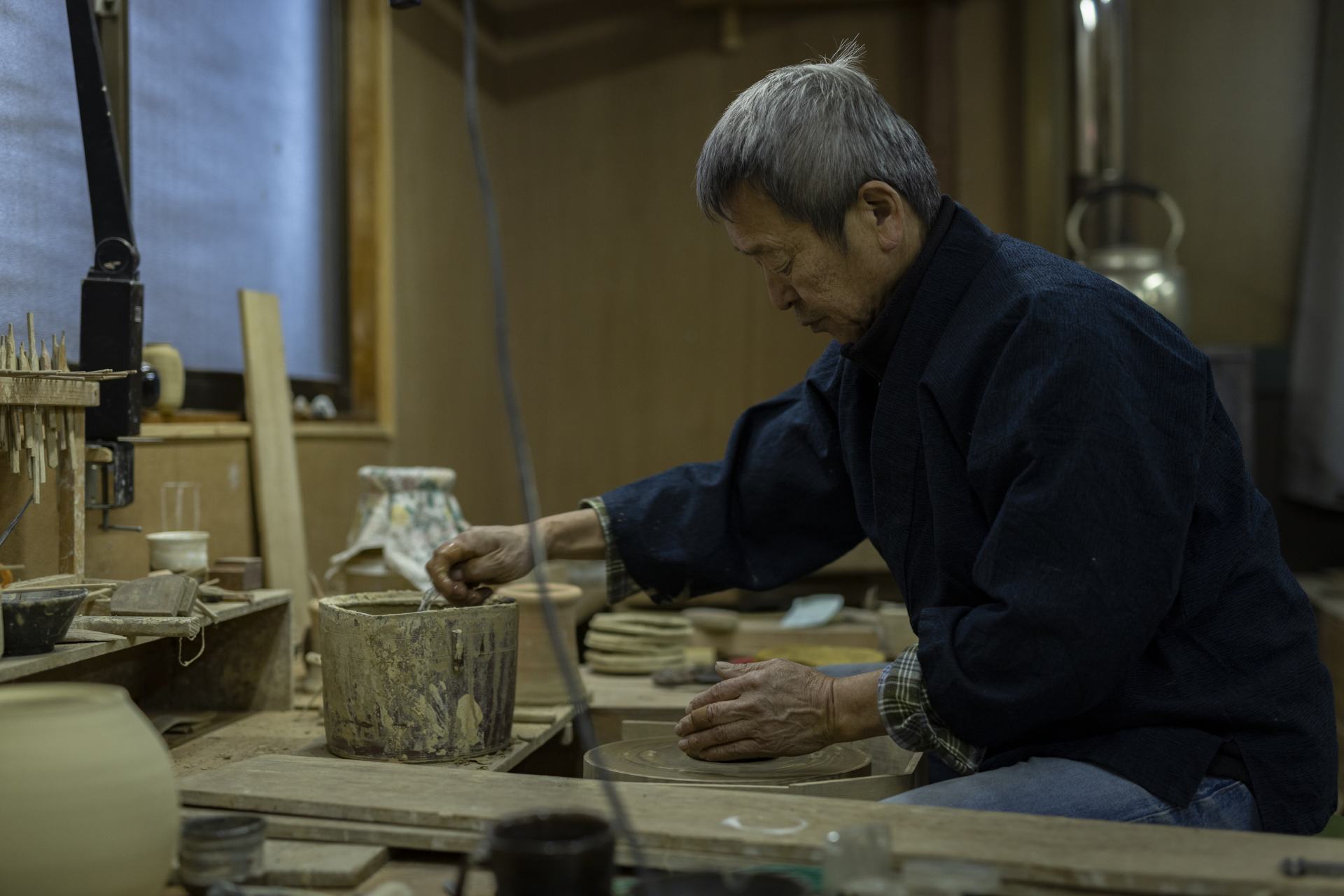
Great potter at work: these are the types of cultural traditions and treasures that should be sustained in Japan.
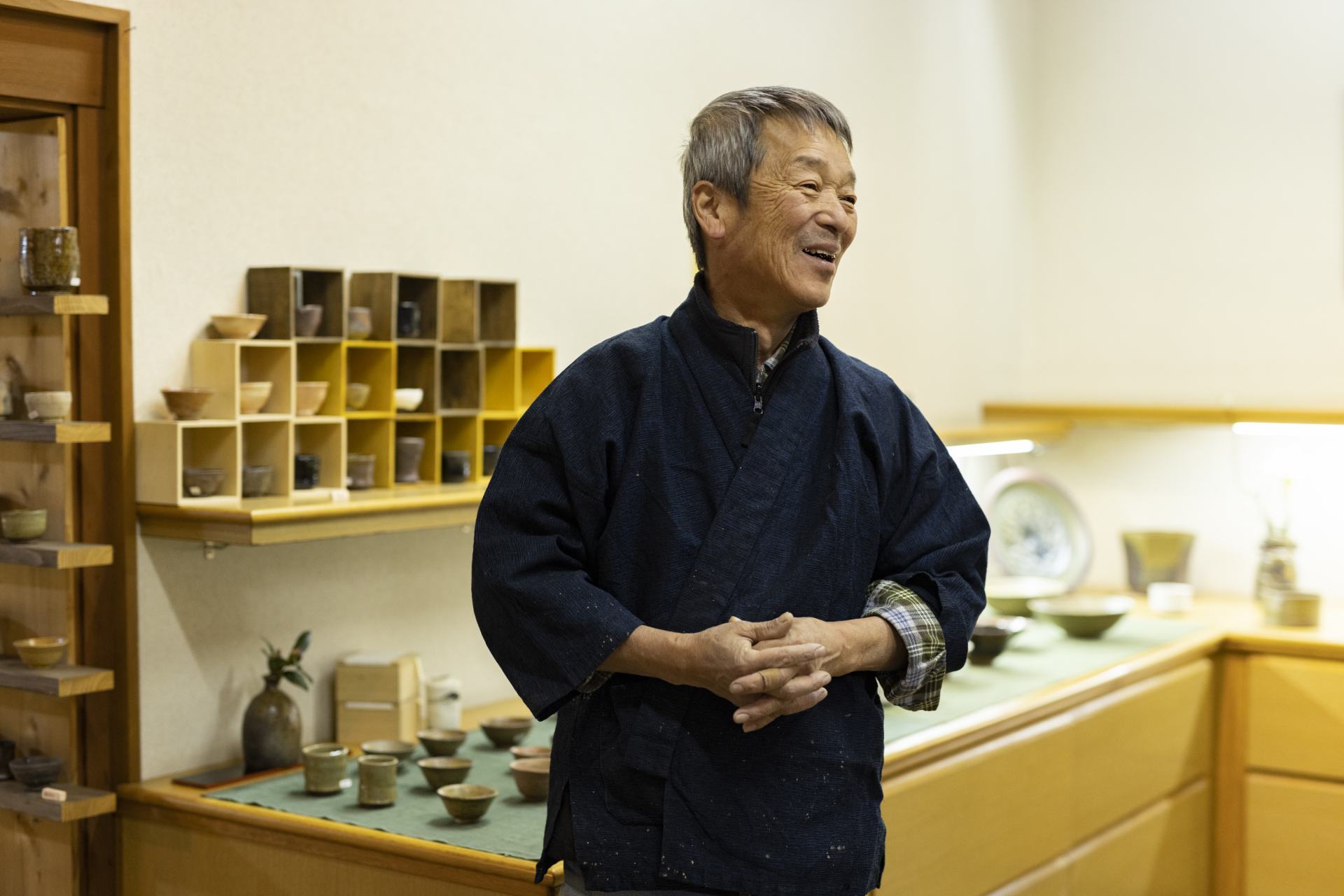
The smile of knowing that people appreciate your work.
Check also...
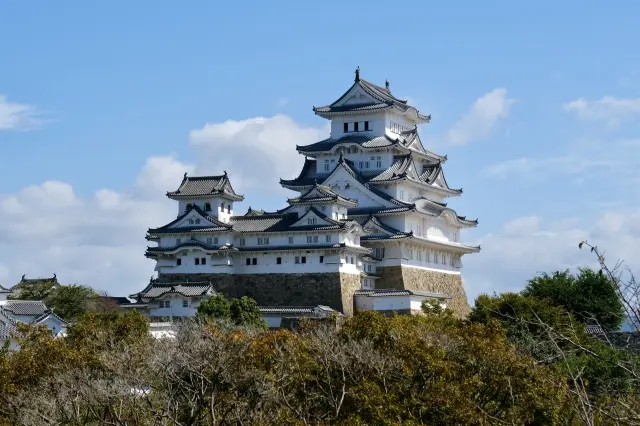
Himeji to Tottori Itinerary: Hidden Castle Towns, Hot Springs & Yokai Street
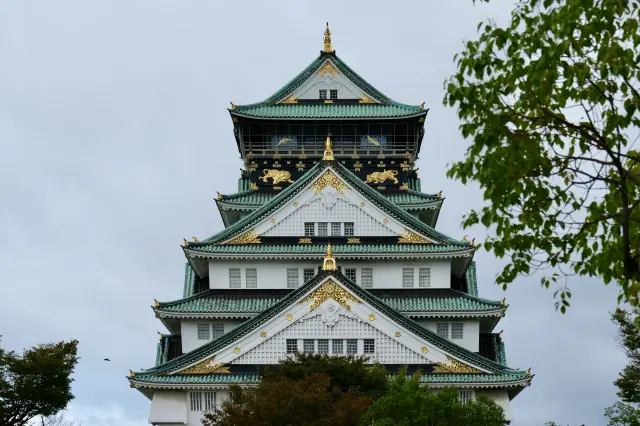
Discover Kansai & Shikoku in 3 Days: From Osaka Castle to Tokushima’s Awa Odori Dance
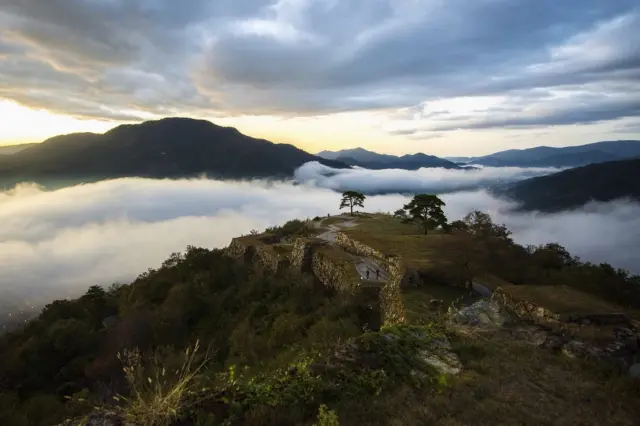
From Himeji to the Castle in the Sky: Exploring Kansai’s Hidden Castle Towns
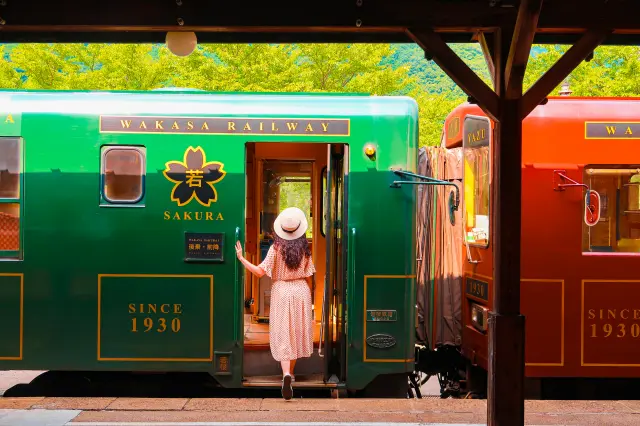
5 Local Experiences Not Found in Guidebooks: Tottori Edition
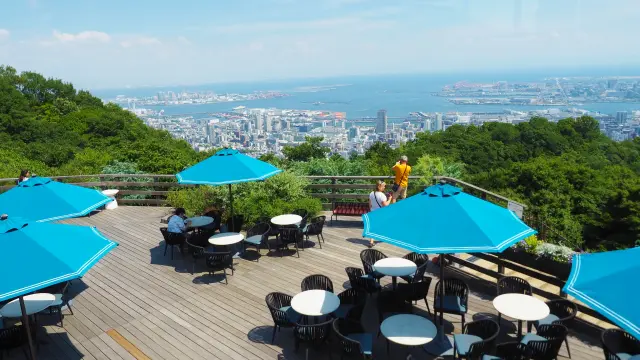
5 Must-Visit Spots in Kobe: From Famous Sights to Hidden Gems
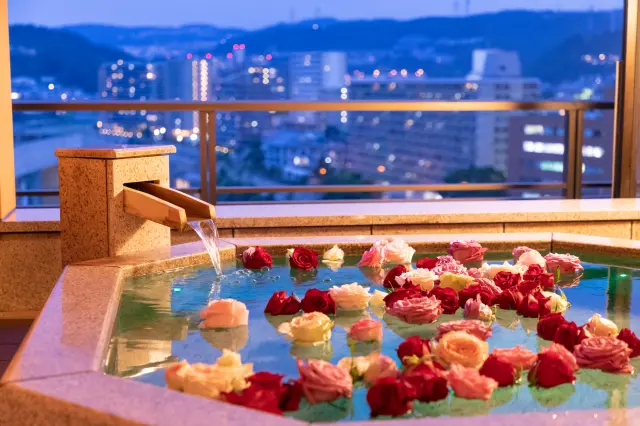
5 Local Experiences Not Found in Guidebooks: Hyogo Edition
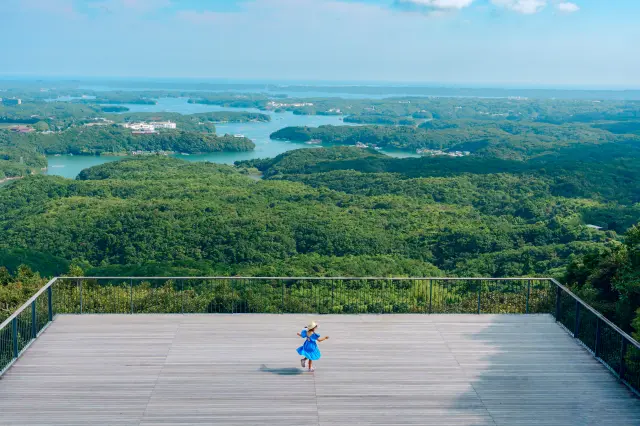
4 Magnificent West Japan Views That Won a Photo Contest
